
The Talamore Llamas
Life Lessons on Course







The Talamore Llamas
Life Lessons on Course






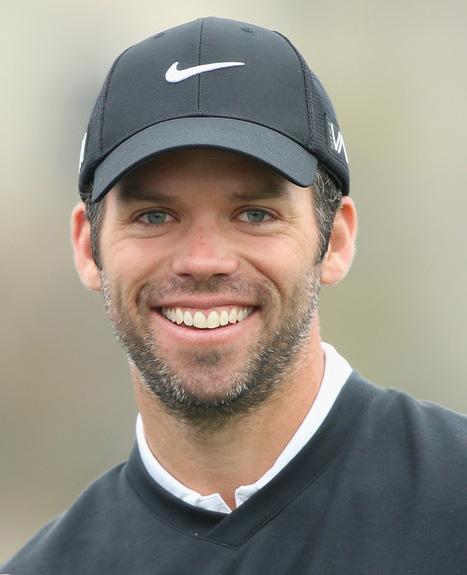


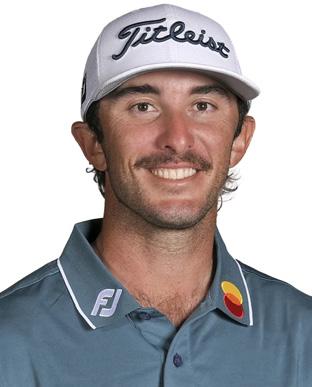
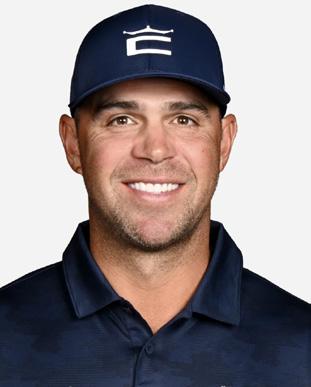
Known for our world-class golf designs, we deliver greens that hold chip shots, roll true and perform as close to a PGA tour green as you can get. It’s why so many pros choose Celebrity Greens for their own practice greens.
CHAMPIONSHIP PUTTING GREENS & GOLF COMPLEXES
Our team has unparalleled expertise in the golfing industry, offering exceptional quality in designing and installing projects from backyard practice greens, to challenging PGA-caliber golf complexes and large-scale commercial golf projects. Discover why so many pros choose Celebrity Greens.
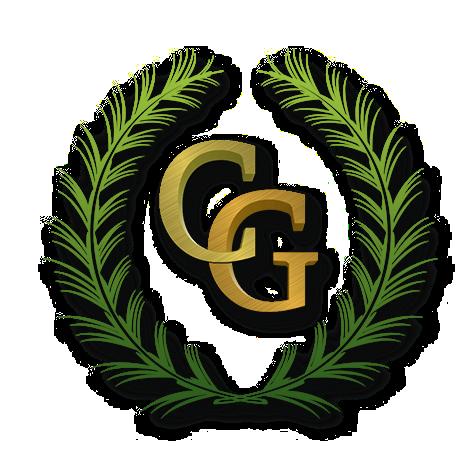
ARTIFICIAL GRASS LAWNS & LANDSCAPING
We apply the same PGA-caliber standards to our lawns and landscaping that we do to our golf projects. We make no compromises in delivering results with the look and feel of real grass. Let us transform your property. Call us today for a free design consultation.




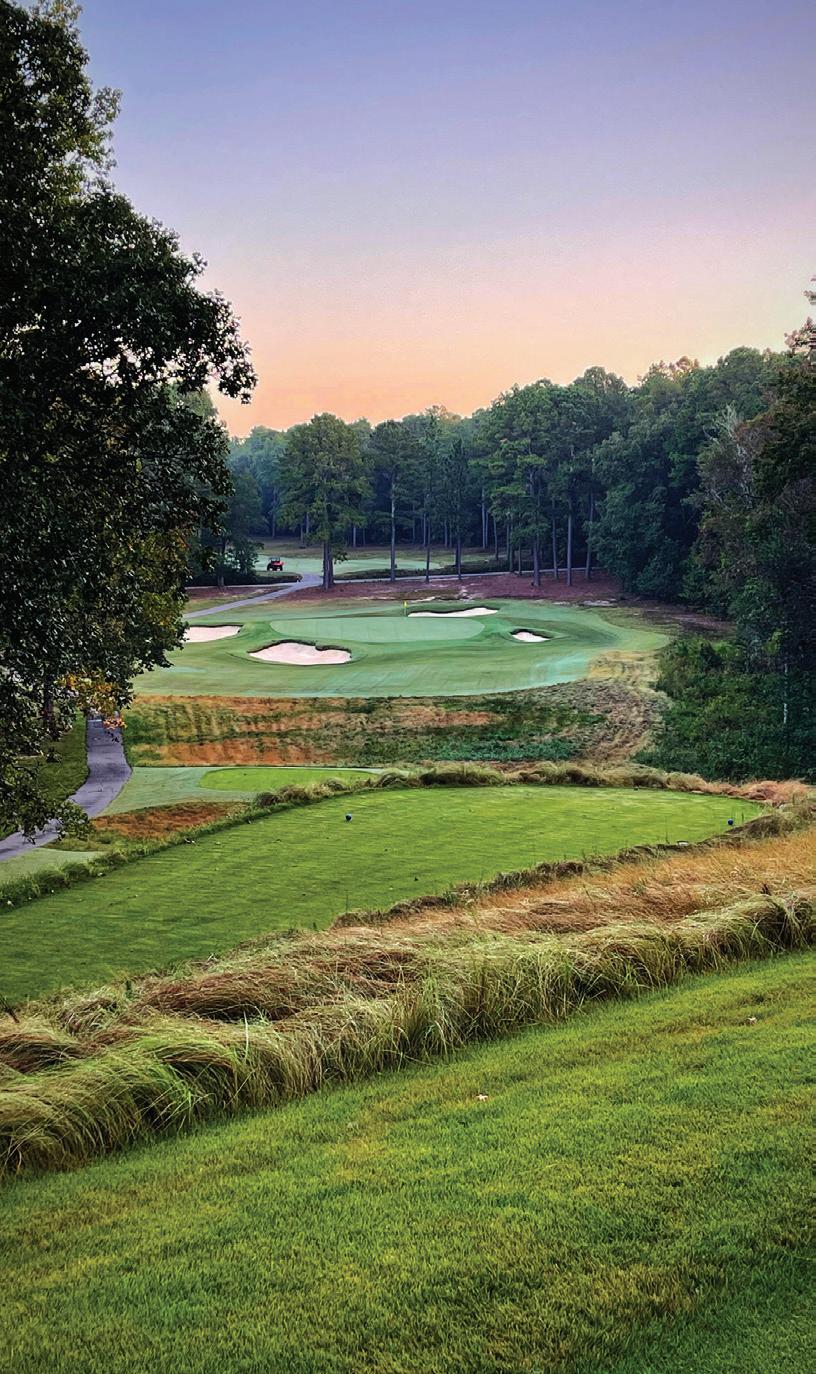

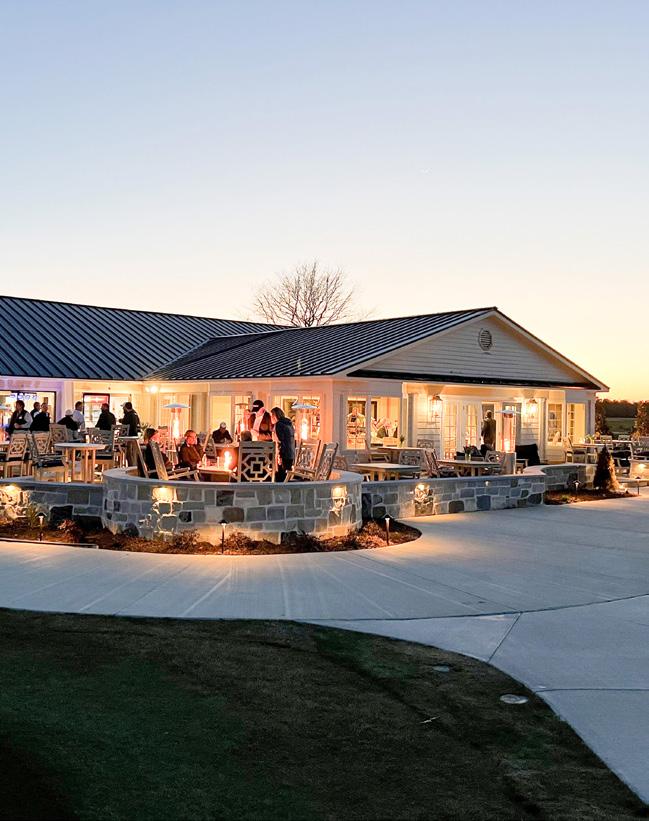

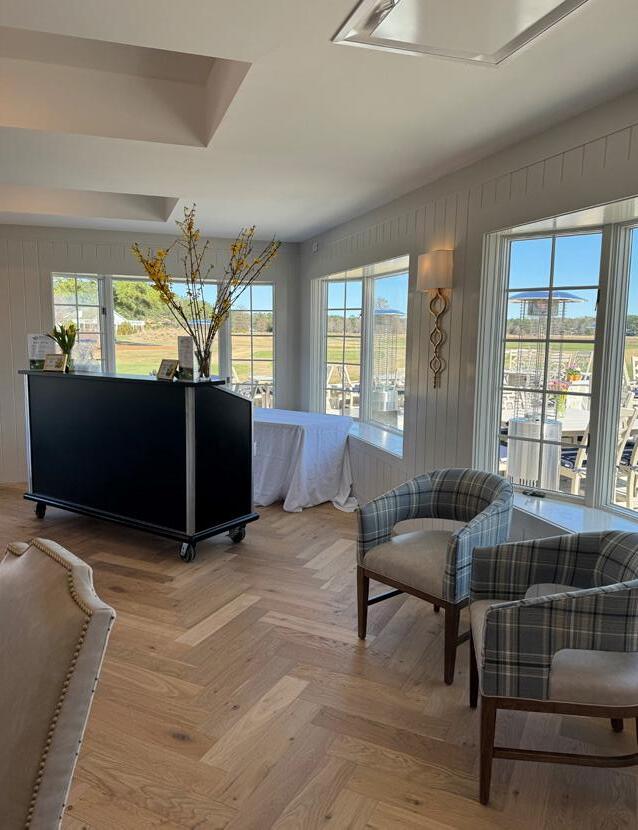
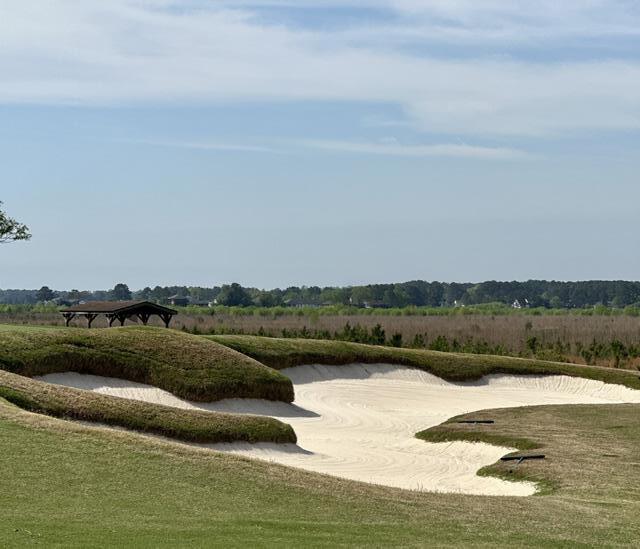
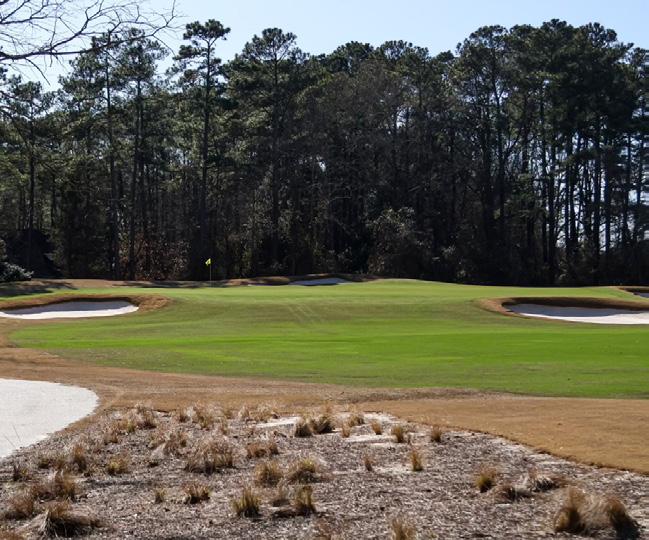

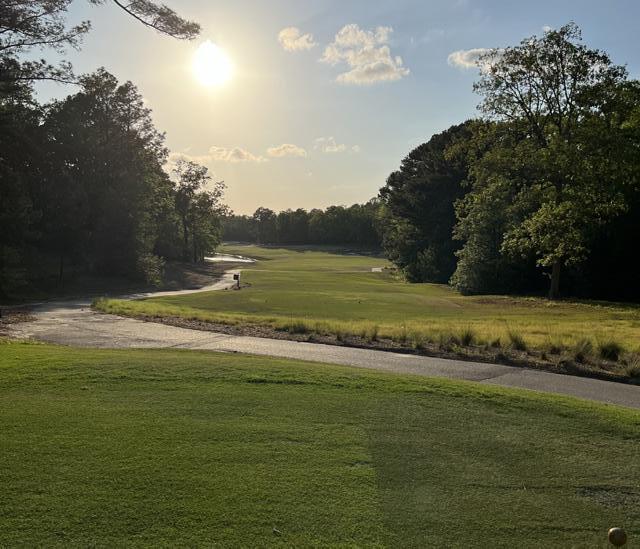





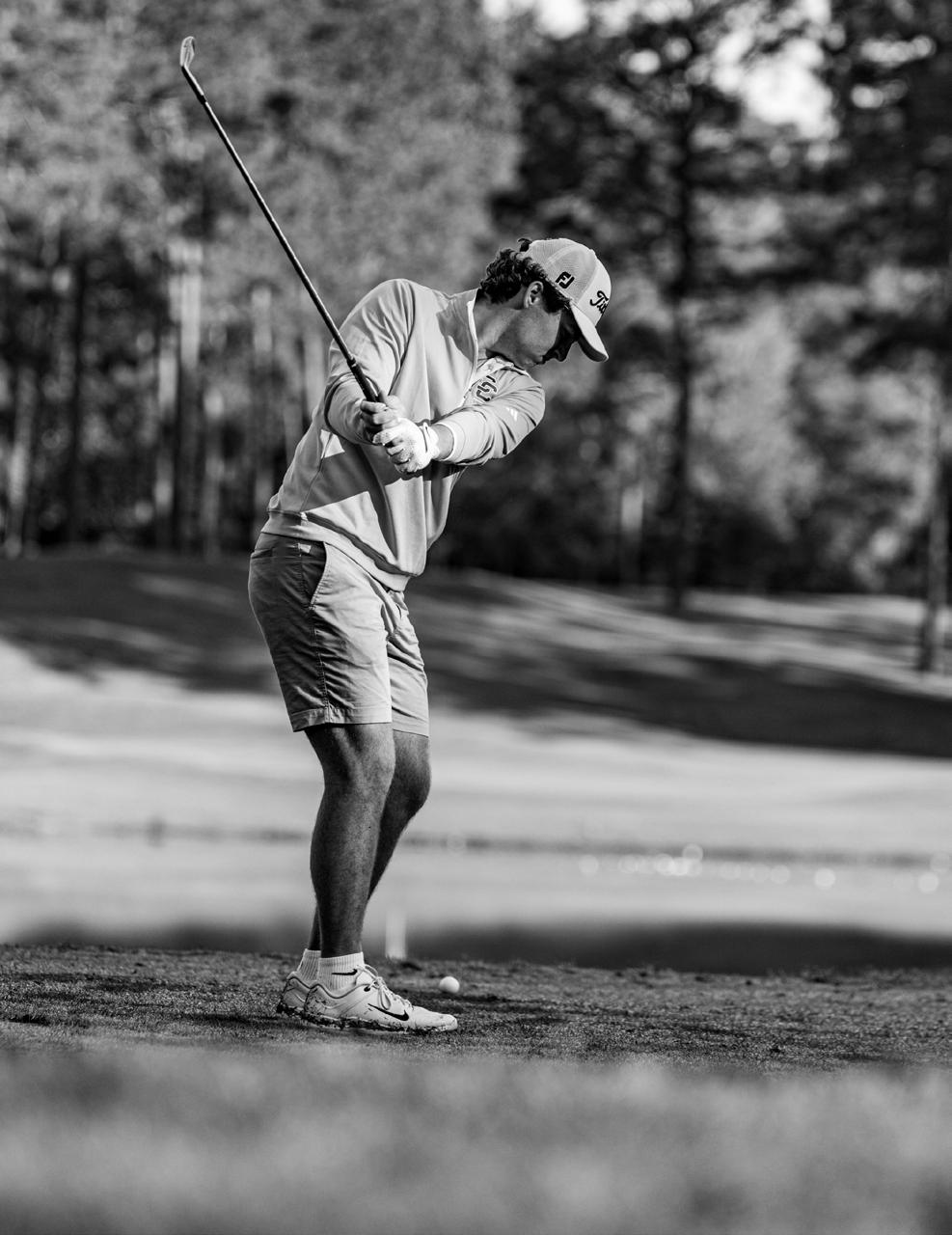

Publisher
BIC R Media, LLC
Layout and Design
Ines Ritter
Contributors
Ray Owen
Cassidy Oeltjen
Moore County Hist. Assoc.
Lisa Miyamoto
Jason Jackson
Ines Ritter
Kate Burks
Dr Theodore Balard
LTC( Retired) Charles Faint
Greg Walker
Cover: Team Player
From Cardinal Gibbons
High School, Raleigh, NC
Photo: Jason Jackson
Advertising & Subscriptions
Info@sandhillsfairways.com
General Inquiries
Info@sandhillsfairways.com
Follow us on www.sandhilsfairways.com
Sandhills Fairways Magazine owned by BIC R MEDIA LLC 360 Fairway Dr Southern Pines, NC 28388
No part of this publication may be reproduced without the expressed written consent of the Publisher.
The Sandhills Fairways Magazine and BIC R MEDIA LLC do not neccessassrily endorse the views of their contributors or advertisers.
In looking for inspiration to kick off this opening issue of Sandhills Fairways Magazine, I turned to quotes, because, let’s be honest, if there’s a way to say something well, it’s probably already been done.
Many of these align around finding balance on the course, finding the good in the bad, finding the humor within frustration.
I’d say we are reflecting those sentiments in this inaugural issue. From selfies with the Talamore llamas to the life lessons taught by US Kids Golf, there is balance. In Brent Bartels return to the links and the conservation efforts by courses, there is balance.
And in staying hydrated while enjoying a few cold ones, there is balance.
Sandhills Fairways is published in print and digitally on our website. Follow us on our social media pages and register for our emails at sandhillsfairways.com
Thank you for joining us while we find our balance, bringing you stories from Sandhills’ Fairways and beyond. Cheers!
Cassidy Oeltjen EditorFitness
Hip mobility for a better swing
Nutrition
Improve performance with a plan
Tech talk
New-practical-innovative
On course life lessons
Us kids golf in the sandhills
From serving to swing
How the sport is changing lives for Veterans
New to golf
Rules- playing the bunker
On course with Jason Jackson - sports photographer
All llama no drama
The llamas of Talamore golf course
Pinehurst
From open range to US Open
Eco friendly fairways
Pinehurst uses historic practices to improve sustainability
Spotted on course
The flora and fauna of the Sandhills golf courses



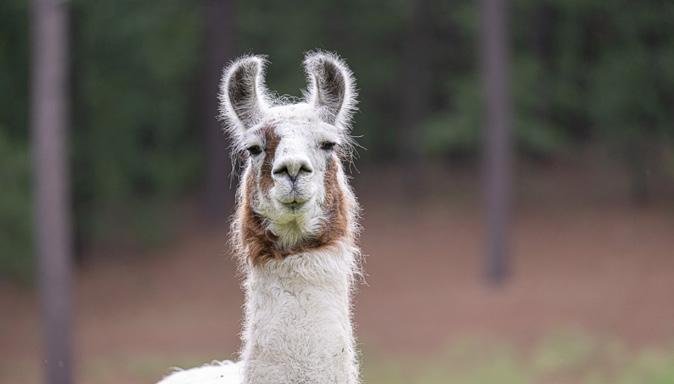

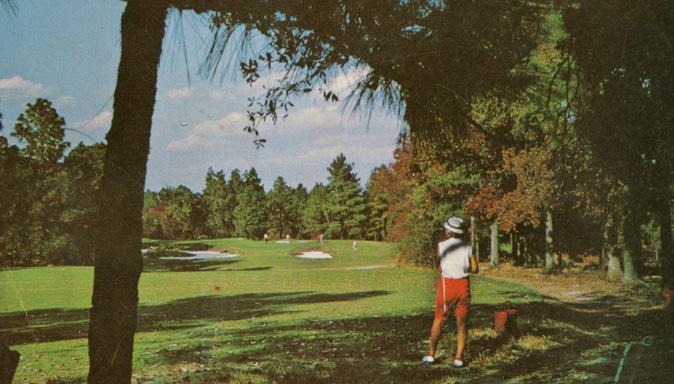

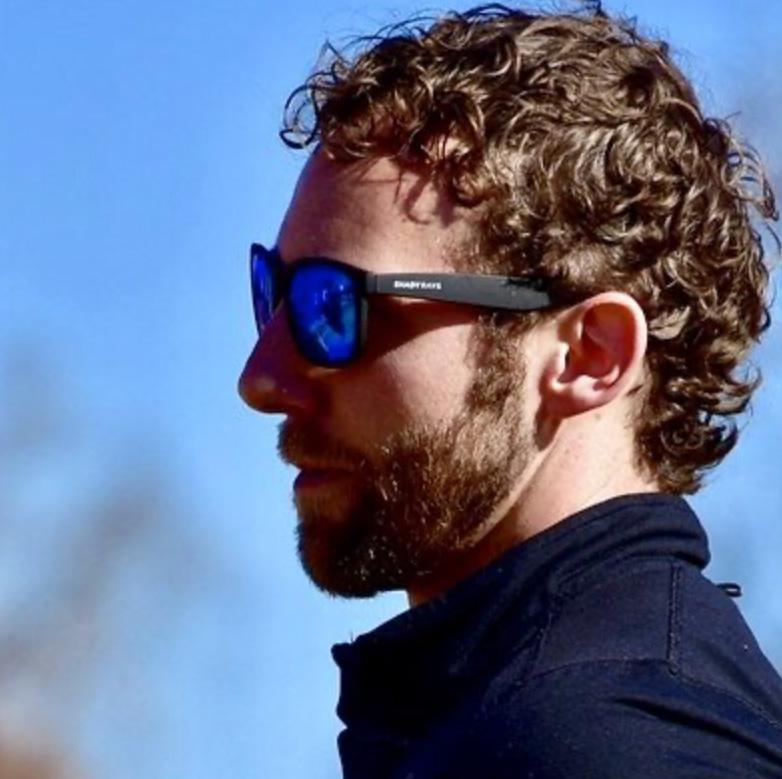
Dr. Theo Ballard is a Board Certified Orthopedic and Sports Physical Therapist who specializes in helping athletes maintain a high level of performance for their specific sport or job demand.
He spends his time in and out of the clinic educating, evaluating and treating athletes on how to prepare, perform and recover optimally to reduce injury risk and maintain longevity.
The ability for our body to store and release energy is critical for overall health and optimizing performance in our golf game. The hip and the upper back are especially important for allowing energy to flow through joints and tissues without increasing strain to the neck, lower back and even the knee. Loose, mobile hips are critical for generating effective power and consistency in our swing.
One effective pattern that prepares your body for the multiple planes of motion required for swinging a club is the split-stance drill.
1.

N ext, create slight tension through your abs by clearing your throat.
Finally, holding your club with both hands in front of you, approximately shoulder width apart, rock forward until you feel a slight stretch in the front of the hip.
Using an elevated surface such as a bench or the side of your golf cart, place one foot in front of you at approximately knee height with the other foot on the ground.
Keep both feet pointed forward and start by squeezing your buttocks as hard as possible throughout this entire series. This will ensure that motion transfers through the hip and not the lower back.
2.

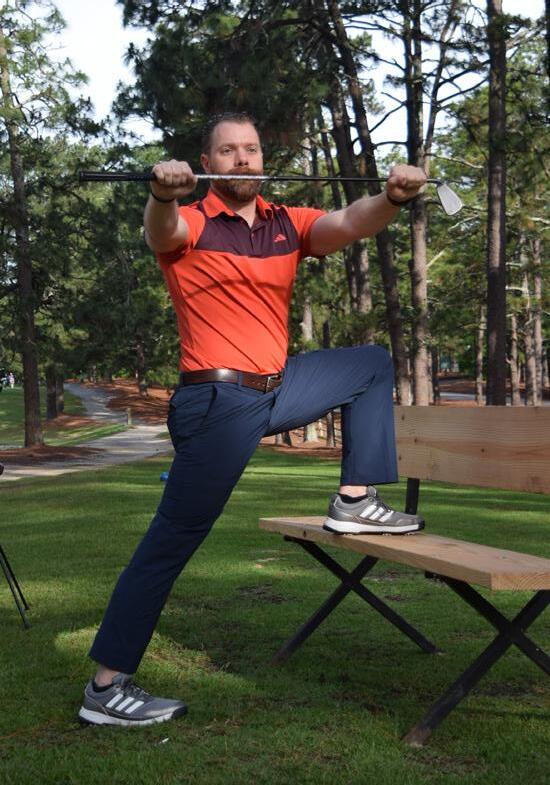

AYou start this exercise by laying on the floor on your back. Bring your knees up with your feet on the floor and then turn your body until you are lying on one side with your knees at a 90-degree angle to your body. 3.
dd trunk rotations side to side, keeping the lower back from arching. Add neck rotations as well and chopping and backswing patterns if desired.
Switch legs and repeat the series.
The split-stance drill will ensure your hips are loose and ready to transfer energy constantly during a long day of golf.
Another great drill to do after a long day on course is the ‘lying crossover stretch’. This exercise is great for ensuring the lower back and hips stay supple and free moving.
1. 2.


Push your arm out with your palms together until they are straight out above your knees but on the floor. Then take the top hand and rotate it up and to the opposite side while also rotating your upper body.
This is called ‘opening the book’. You need to keep your knees together moving only your arm and your upper body until you feel a stretch.
Hold for 15-30 seconds and repeat at least three times. Repeat the process on the opposite side.
A good, powerful golf swing comes from the hips and it’s extremely important to keep them loose in order to generate power. Add these easy, quick exercises to your daily outine to keep yourself in game!

Kate Burks earned her B.S. in Nutrition Science from Louisiana State University and her M.S. in Sports Nutrition from the University of Colorado in Colorado Springs.
She is a Performance Dietitian specializing in tactical and professional sport with a Board Certification as a Specialist in Sports Dietetics. Kate works with a wide variety of needs including performance optimization, weight management, inflammation & stress management, and nutrition to support injury prevention and rehabilitation. She is an ISAK Level 3 Kinanthropometrist.
Kate Burks is currently serving as the Performance Dietitian with 3rd Special Forces Group (Airborne) as a contractor with KBR. In previous roles she was the Minor League Nutrition Coordinator for the Toronto Blue Jays and Senior Sports Dietitian at IMGAcademy where she was responsible for Football, Basketball, Golf and Lacrosse, as well as the NFL Combine and Spring Training Programs.

“What would you be willing to do to perform 1% better?”
An improvement of 1% may seem insignificant at first, but when you consider the impact of 1% on every day of training, you may agree that the benefits accrue rather quickly. Whether that 1% improvement impacts your hand-eye coordination, attention, muscle control, or power through your golf swing, the repeated bouts of opportunity during a round of golf with your body in an optimal state can only result in positive growth. So, when you reflect on what you might do to perform 1% better, I hope you consider sports nutrition as an area you can improve upon.
The food and fluid choices we make as humans tends to be largely emotional, meaning the foods we often select are associated with emotional reward or personal satisfaction - whether that be sweet or savory may vary for many reasons not addressed in this article. Nonetheless, when we apply some
objectivity and purpose to the decisionmaking process with regard to the fueling strategies we wish to employ in order to optimize performance, we allow our brain and body to be in sync resulting in an optimal environment within the body to dial in that 1% improvement.
All of a sudden we are training with purpose, on purpose, that is where the magic is hidden.
There are many common “rules” in fueling sports performance properly, but some of those common rules can be less appropriate for an entire round of golf. Furthermore, there may be increased requirements or limitations due to the external environment itself. For example, high heat and humidity requires specific hydration strategies that may need to be tailored to the individual consumer, but in general
may impact food choices as many products may melt or crumble in a hot environment and other products such a cold fruit might feel more refreshing.
Whether a golfer or spectator, strategic fueling for golf requires three primary goals in order to optimize both physical and mental performance:
• Maintenance of blood sugar (energy) via manipulation of carbohydrate type and nutrient timing.
• Intentional intake of recovery combinations to ensure readiness for additional rounds of golf in a tournament setting.
• Proper hydration to ensure focus, attention and power are maintained with minimal distractions due to symptoms such as tiredness, irritability or headaches over multiple hours on the course.
Physical and cognitive performance are optimized with sugar, given it is the primary fuel source for both the body and brain. Due to the rapid digestion rate and improved gut tolerance necessary in higher intensity of intermittent physical activities, most sports nutrition recommendations include more refined carbohydrates to supply sugar as fuel. However, golfers would benefit from strategic utilization of both slow and rapid digesting carbohydrates.
Routine consumption of carbohydrates maintains blood sugar and helps to maximize attention and power while minimizing symptoms such as brain fog, headaches and fine motor control. Complex carbohydrates break down slowly providing the body fuel over prolonged periods of time and with golf specifically, minimal issues regarding
gut intolerance are incurred given the physical aspects of the sport does not involve repetitive jumping, flipping or sprinting. Complex carbohydrates contain fiber and are ideal to be included in any meals or snacks prior to a round or tournament and during the front nine.
Whereas, during the back nine, one might benefit from more rapid digesting carbohydrates. The benefit of more simple sugars in the back nine is related to digestion time, allowing for
of the round tends to be well tolerated and ideal for maximizing focus. Ideally, this snack should prioritize carbohydrates and complex carbohydrates are highly recommended to slowly release energy and maintain blood sugar. Adding protein to this snack is optional, pending gut tolerance and individual preferences, though it should be emphasized that carbohydrates are particularly important at this time versus protein for performance optimization.

an individual to reap more immediate returns cognitively as fatigue sets in and attention tends to diminish.
Nutrient timing is important for maintenance of blood sugar, proper digestion, appetite maintenance, and protein synthesis signaling for recovery. An ideal fueling strategy surrounding a round of golf involves:
• A meal 2-4 hours prior, which should include lean protein, complex carbohydrates and plenty of fruits and vegetables containing a variety of colors.
• Then, incorporation of a snack 30-60 minutes prior to the start
Throughout all 18 holes, the goal is to maintain blood sugar at an hourly rate of 30-60 grams of carbohydrate for clear, consistent energy. This may strategically appear as 4 snacks planned at holes 4, 9, 12 and 16-17. Holes 4 and 9 are best executed with complex carbohydrates, while carbohydrate fueling in the back nine may be more simple to moderate in fiber content to provide more immediate energy. The snack between holes 16-17 would likely be best executed with a simple carbohydrate such as chew, gel, fruit leather, etc. to optimize attention for the final holes.
At the turn and immediately post the round, it is important to pair a protein with the carbohydrate to repair and refuel the body appropriately. The addition of protein will also help
mitigate hunger pains in the back nine while signaling protein synthesis during and after for optimal recovery.
The environment throughout the summer months in North Carolina has high heat and humidity, so it is important to consider the vital role sweat plays in cooling the body. Whether you are playing golf or spectating, a hydration strategy is necessary to reduce injury risk.
Mental performance is particularly impaired at a weight loss of 2% due to dehydration. For example, a 200 lb individual with a loss of 4 lbs during the duration of an activity or physical training would be equivalent to 2% dehydration. Unfortunately, arriving in a dehydrated state confounds the simplicity of this mathematical approach to understanding one’s hydration status during a round of golf. In order to arrive in a hydrated state, one must prioritize their hydration during the prior 48 hours, but fluid

“Dehydration
increases the demand on the heart to circulate blood effectively and as one’s core temperature rises, the innate ability of the body to cool itself becomes impaired”
sweat. Sodium plays multiple roles in hydration, but most noteworthy are its roles in muscle contraction and relaxation, as well as the retainment of fluids.
The rate of fluid loss is equally important to consider as the quality or types of fluid consumed. Fluid replenishment is ideally matched to one’s sweat rate, but an average recommendation across multiple sports would be 24-32 oz/hr of fluid and 400-800 mg/hr of sodium, which equates to 5-10 oz or 4-6 gulps every 15 minutes.
It is commonly inquired as to whether other fluids impair one’s hydration status, such as caffeinated beverages and alcohol. Caffeinated beverages can be beneficial to optimize performance and are unlikely to promote dehydration unless consumed in excessive quantities greater than 6 mg/kg/day. However, the diuresis effect of caffeine may be more distracting due to the increased need of urination during a round of golf. Alcoholic beverages on the other hand do contribute to dehydration, increase inflammation throughout the body, delay recovery, and increase diuresis, also resulting in a greater urination frequency.
Dehydration increases the demand on the heart to circulate blood effectively and as one’s core temperature rises, the innate ability of the body to cool itself becomes impaired. Some additional dehydration-related symptoms include: self-reported tiredness, decreased concentration, endurance, ability to stay in sync, and increased irritability, risk of muscular cramping, cortisol production and muscle breakdown.
overload can be dangerous in hot environments and negatively impact physical performance. In order to reduce risk for hyponatremia due to fluid overload, cool the body effectively and maintain proper hydration, it is imperative to replace all that is lost in sweat. Therefore, it is important to incorporate electrolytes in those fluids, with specific emphasis on sodium, as it is lost in the greatest quantities via
When considering ways to achieve that 1% improvement, you may consider adjusting your fueling routines surrounding and during a round of golf, the strategic selection and placement of carbohydrates and protein, or even adjust the volume and/or types of fluids consumed in the days prior to and during a round of golf or tournament. The difference seems small, but small changes eventually add up to huge results.





























Chrome Tour is the new gold standard in tour balls. From core to cover, every detail in the latest Chrome Tour has been optimized for the better player seeking distance and feel.
Providing the signature soft feel that golfers love, the Chrome Tour Golf Ball comes with a new high-performance Tour Urethane Soft Cover that consistently delivers greenside control with an incredible feel. Our experts at the Local pro shop agree that the Chrome Tour is an elite ball in terms of performance and durability.
Find them at:

Designed and crafted right here in Pinehurst, NC, these beautiful tools are made from your choice of stainless steel or brass. Each pitch mark repairer/ divot tool is hand-milled and unique.
The Bishop Putters Divot Tool is an excellent addition to your golf bag. It features a stylish round design with a single prong. Despite being made of metal, each tool feels solid but not heavy, allowing for easy access in either your golf bag or pocket.
You’ll wish everything was this easy on the golf course. As an added bonus, they also make a perfect cigar punch.
Find them at: www.bishopputters.com
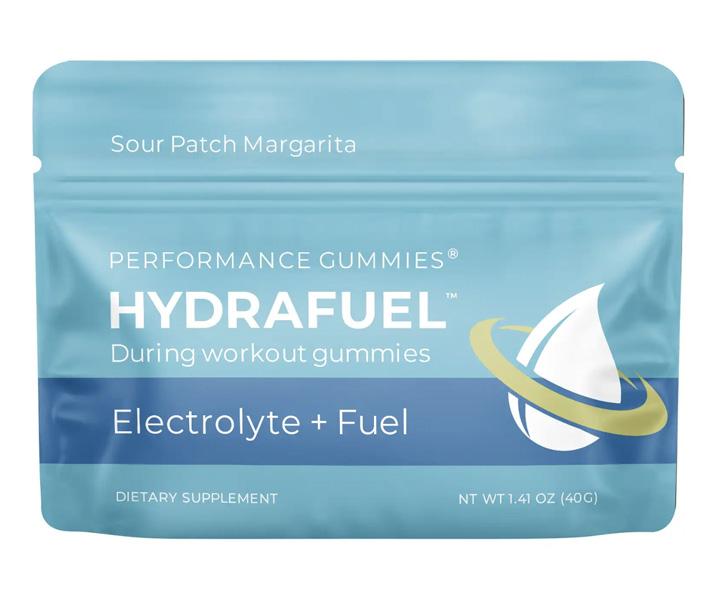
Seattle Gummy Company’s Electrolyte Hydration Gummies 12-pack is a must-have for anyone looking to stay hydrated and energized while playing golf. These gummies balance the optimal combination of fuel and electrolytes to help athletes avoid dehydration, reduce fatigue, and maintain exercise intensity and performance.
The sour patch margaritaflavored gummies swiftly restore electrolyte balance and boost energy for longlasting hydration, enhancing your performance while on the course. The resealable package is perfectly sized for any golf bag.
Find them at: www.seattlegummy.com

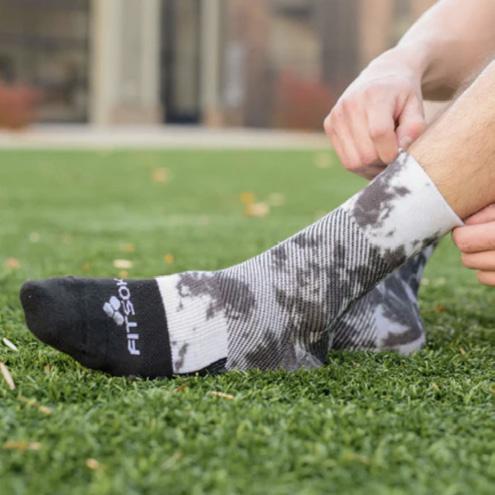
Proudly made in the family’s generation factory in Hickory, NC, Crazy Compression is a sock brand that takes pride in offering larger-than-life, fun, and colorful compression socks at a great price!
The Crazy Compression socks help improve blood circulation, reduce swelling, and alleviate leg and foot pain. Available in different compression strengths and lengths, you will undoubtedly find your perfect pair for the next game! Make sure to take a look at their “Limited Edition Socks”!


Few things instill life lessons like learning to consistently hit a tiny white ball through manicured countryside in all sorts of different conditions.
Even for adults, mastering this sport can come with its fair share of frustration and steep learning curves. The culture sometimes doesn’t lend itself to being family oriented… afterall, usually the ball requires some four letter words being shouted at it in order to fly in the correct direction! It is also a pastime that requires quiet time to focus… conditions that aren’t typically found when the family tags along.
For the US Kids Golf Foundation, creating a space where families are welcome and children have the opportunity to process all that golf has to offer, has brought them to an old horse farm in Southern Pines, North Carolina.
US Kids Golf began in 1996 as an equipment focused company. Using his background as an engineer and professional golfer, Dan Van Horn worked to design lightweight, fitted clubs for his young kids to hone their skills properly. These clubs alleviated the burden of heavier clubs that were hurting not only their swing, but their desire to play.
In 2000, it became apparent that the need for scale for children golfers expanded beyond just the equipment. The US Kids Golf Foundation was initiated, with two main points of focus: play and learn, and competitions. Many key aspects would be analyzed and initiated to fulfill the goals of these two points.
The process started from the ground up. Many courses are just not designed with families in mind. They lack the ability to systematically develop a kid’s golf game, so a forward tee system was created. This tee placement means that not only can a child develop more
incremental skills, but also families can enjoy the game of golf together on the same course. Ultimately this practice became known as the Longleaf Tee System, and it made way for the ‘player pathway curriculum’. This systematic process provides kids and parents a way to develop the skills necessary to be consistently successful at golf.
Next, the organization looked at who was teaching the kids. In 2013, they developed a continuing education program for coaches and implemented the US Kids Golf Certified Coaches Accreditation program. Since its inception, over 6000 coaches from 70 nations have participated in the program either in person or online. Families can use the coaches directory derived of these accredited educators to seek help for the their children
Golf teaches kids proper etiquette, sportsmanship, patience and how to handle adversity,
They also recognize outstanding coaches at the PGA of America Merchandise Show, where each year the top 50 coaches are identified. Once a coach receives this award three times, they become a Master Kids Coach.
And parents are not simply a bystander, left to watch the game and be a chauffeur. US Kids Golf formed a partnership with the Positive Coaching Alliance which provides the Second Goal Parent Certification. The whole goal of the program is to help everyone - players, parents, coaches, etc…realize all of the benefits that sports can bring beyond the game.
Parents are also included in the action. They are encouraged to caddie for their players in tournaments - a concept that
was initially thought to be controversial, but has now been adapted to other tournaments. At Longleaf Golf and Family Club, there are parent/child camps happening all summer long where the whole family can improve their skills.
The competition aspect of the organization has grown exponentially since its inception. US Kids Golf tournaments originated with the 2000 World Championship held in Jekyll Island, Georgia as the only tournament on the calendar. Now that calendar has expanded to 1,600 tournaments around the world. Each of these tournaments breaks down divisions by age and gender, giving each child a level playing ground to show off their skills.
Players aged 5-14 play their way through competitions in their local community, state, region, and finally the World Championship. This event takes place here in the Pinehurst area over 10 championship courses. The community pulls together to host the world’s largest junior golf tournament, welcoming over 1,500 participants.
In 2008, the organization expanded to include an international championship event - the European Championship. This event is held over historically significant courses in the East Lothian, Scotland area. The international tour’s growth has coincided with the growth in the United States, expanding to include the Venice Open, South American Championship, Caribbean Championship, and Indian Championship (along with smaller tournaments on the tour).
The Longleaf Golf and Family Club, located in Southern Pines, has been a part of the US Kids Golf narrative since 2015. Originally named the Longleaf Golf and Country Club, they changed the name to align with the desired family atmosphere. It has grown into a “living laboratory” - a culmination of all the goals of the
organization. It has a state-of-the-art academy, seven tee locations, and truly is a family golf oasis.
And in true Sandhills fashion, the property was originally a horse farm, tying together the region’s rich heritage of both golf and equestrian sports.
Participating in such an international organization has been particularly beneficial to a local competitor. Charles Chopping, the son of Jennifer and Harold Chopping of Southern Pines, began participating in the program when he was 5 years old, kicking off his competitive career at seven.
His golf career has come out ‘swinging’, winning the Canadian Invitational and finishing Top 10 in the European Championship. So far in 2024, he has won four of the six US Kids Golf tournaments he has played in.
Chopping credits golf and the US Kids Golf program with instilling useful life lessons in her son.
“Golf teaches kids proper etiquette, sportsmanship, patience and how to handle adversity,” she emphasized. “The [US Kids Golf] program has taught him about competition, and how to build confidence in their game and in themselves.”
While the systematic approach and vital life lessons seem like a fool proof way to make upstanding members of society, watching kids navigate life is typically a cinematic dream. Awkward learning moments, outlandish statements, and unintentional hilarity can all be expected, especially when involved with top level competition. The Short Game, a Netflix documentary, follows 8 boys and girls as they make that journey, preparing for the 2012 World championship in Pinehurst.




BBrent Bartels isn’t your average golfer.
After playing avidly (and well) in high school and into college, he struggled academically and decided to drop out of school. But after watching the movie Sniper, Bartels was motivated to join the military and eventually enlisted in the Army. Upon completing initial entry training Bartels earned his way into the Ranger Regiment before moving to the Special Forces and becoming a Green Beret. But in the years (and wars) that followed, golf became less and less of his life as Bartles concentrated on mastering his military craft.
Bartel’s golfing days almost ended forever in October of 2017, when he and his special operations team were ambushed in the African country of Niger during an attempt to locate and capture a local ISIS terrorist leader. Four Americans and several supporting
Nigerian troops were killed in the resulting firefight. Bartels himself was severely wounded, with a bullet causing massive damage to his arm.
Because of his valor on that day, Bartels was awarded the United States Armed Forces’ third-highest military decoration for valor in combat, the Silver Star.. While he made it home after that mission, the trauma to Bartels’ body was so severe that he faced being involuntarily separated from the service. However, through his own sheer determination and the help from many medical professionals and physical therapists, he was able to recover enough to stay in uniform.
And along the way, he found himself back on the golf course.
Like many veterans, especially ones who faced physical trauma or mental
hardship, Bartles finds solace on the green. “It’s extremely therapeutic,” he says of golfing. “It’s a healthy passion,” and a great way to work through one’s troubles.
Many other veterans have found similar release through the sport of golf— and for good reason. It’s outdoors, it requires a level of physical and mental exertion, and just about anyone can play. More importantly, there is often a feeling of community and a sense of accomplishment after playing a round, and golf is an opportunity to set all other cares aside.
“You’re outdoors, you’re with friends,” Bartles explained. “You have the wind, the lie, the slope and a multitude of other factors... but all you have to do is focus on that next shot. Golf is a great game for life.”
Golf is very popular in the US military, with more than 150 courses on various bases in the United States and overseas, and tens of thousands of golfers with a military background.
For those who are interested in finding out more about golfing opportunities for veterans, Bartels cited a number of organizations that support golfing opportunities for the military, including for individuals who have never played before and want to get out on the links. They include the Veteran Golfers Association, Birdies for the Brave, Fore Country, and PGA Hope.
“The more you put it off, the more you’ll regret it later. Get started!”
He also singled out Brad Clayton and his PuzzleDuck organization for their work in helping veterans develop their golf game. Many of these organizations have a very wide reach. PGA Hope, for example, has plans to work with 17,000 veterans and current service members this year alone.
Another reason golf is attractive to veterans, especially wounded warriors, is because it can be played by people with a wide range of physical capabilities, and due to the handicap scoring the game can be competitive even among people with widely differing skill sets and experience levels.
Bartels highly recommends golf for any current or former military member. “There’s no better time than now to start,” Bartels said when asked what advice he has for veterans who might be looking to get into golf. “The more you put it off, the more you’ll regret it later. Get started!”

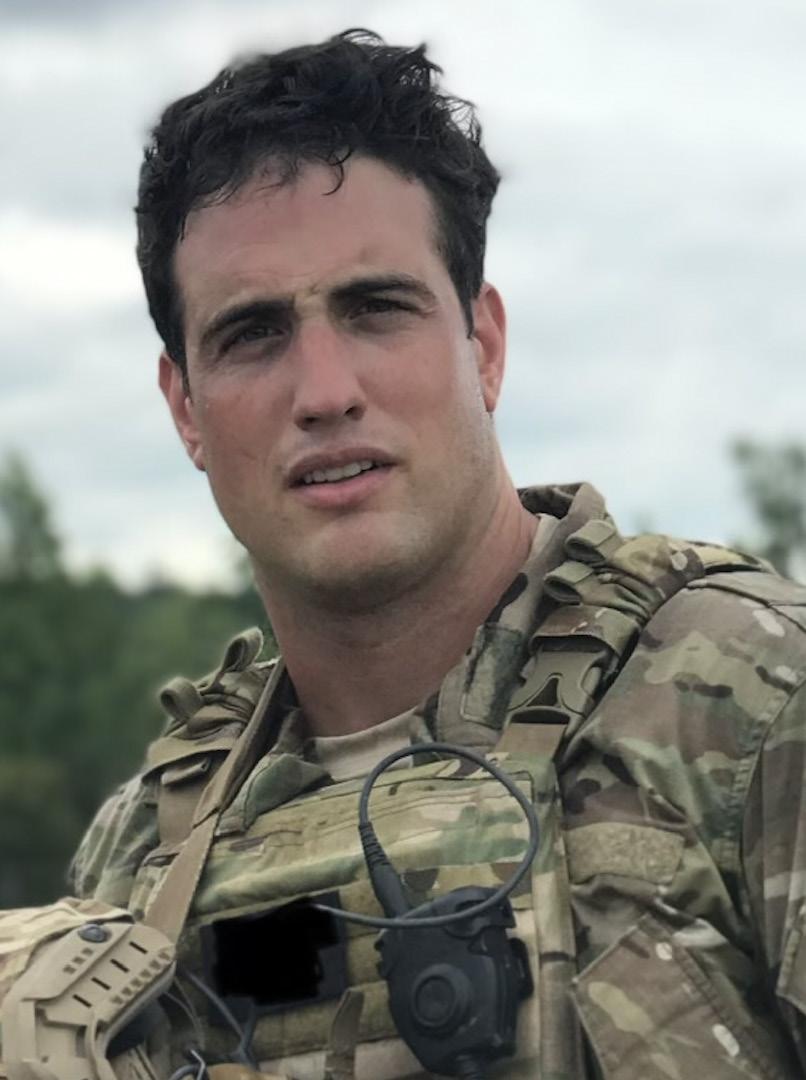


As a new golfer, navigating the rules and etiquette of the game can be overwhelming. One particular aspect of the game that often perplexes beginners is dealing with bunkers. Bunkers, also known as sand traps, are hazards on the golf course designed to challenge players with their sandy and often unpredictable terrain. Understanding the rules for golf bunkers is essential for any new golfer looking to improve their game and avoid unnecessary penalties. The following are key rules and guidelines for navigating bunkers on the golf course:
1. Avoid Grounding Your Club. When your ball lands in a bunker, it’s crucial to remember not to ground your club before making your shot. Grounding the club means allowing it to touch the sand before you make your swing. This rule is in place to ensure that players do not test the conditions of the sand or improve their lie before taking their shot. By refraining from grounding your club, you uphold the integrity of the game and play the ball as it lies.
2. Addressing the Ball. Before making your shot from the bunker, you are allowed to address the ball by taking a practice swing near it. However, be mindful not to touch the sand behind or next to the ball during this process. Addressing the ball allows you to get a feel for the swing you will make without violating the rules.
3. Ball Movement in Bunkers. In a bunker, if your ball moves as you address it or during your backswing, there is no penalty as long as the movement results from natural forces. This means that if the wind causes your ball to shift position, you can reposition it without incurring a penalty. However, if the ball moves due to a player’s actions, such as grounding the club, a one-stroke penalty is applied.
4. Raking the Bunker. After making your shot from the bunker, it is customary to use a rake to smooth out the sand where you made your shot. This helps maintain the integrity of the bunker for other players and ensures that everyone faces a similar challenge when encountering the hazard. By raking the bunker, you contribute to the overall upkeep and fairness of the course.
5. Unplayable Lie in a Bunker. If your ball lands in a difficult position within the bunker, you have the option to deem it unplayable. This allows you to take relief outside the bunker with a onestroke penalty. However, it’s important to note that you cannot simply declare your ball unplayable to avoid a difficult shot. The decision to declare an unplayable lie should be made judiciously and in accordance with the rules. Understanding and adhering to these rules for golf bunkers will not only enhance your playing experience but also demonstrate your respect for the traditions and sportsmanship of the game. By familiarizing yourself with these guidelines, you can approach bunkers with confidence and skill, turning what may seem like a daunting hazard into an opportunity to showcase your abilities on the golf course.
For detailed rules on navigating bunkers please visit www.usga.org/rules
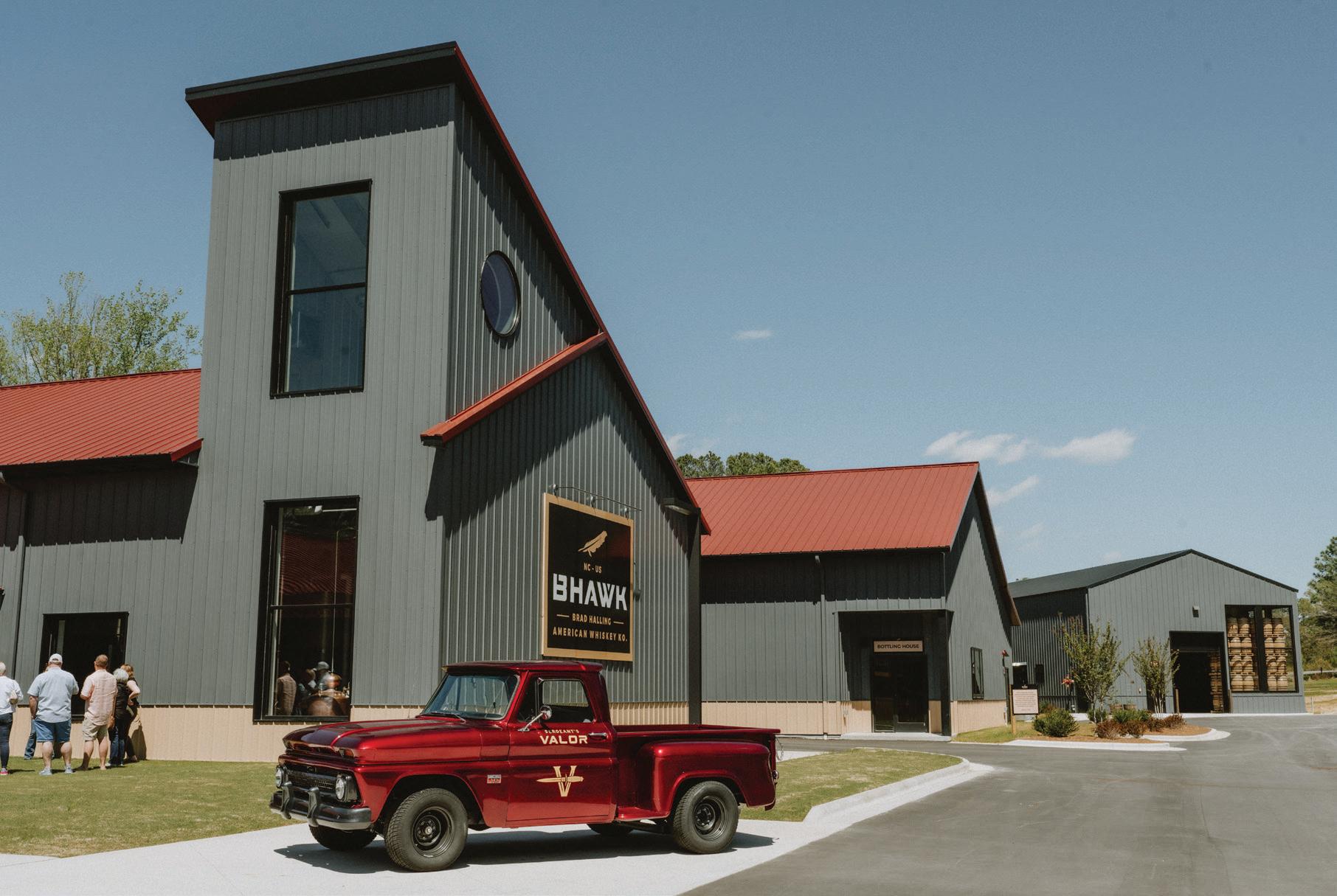
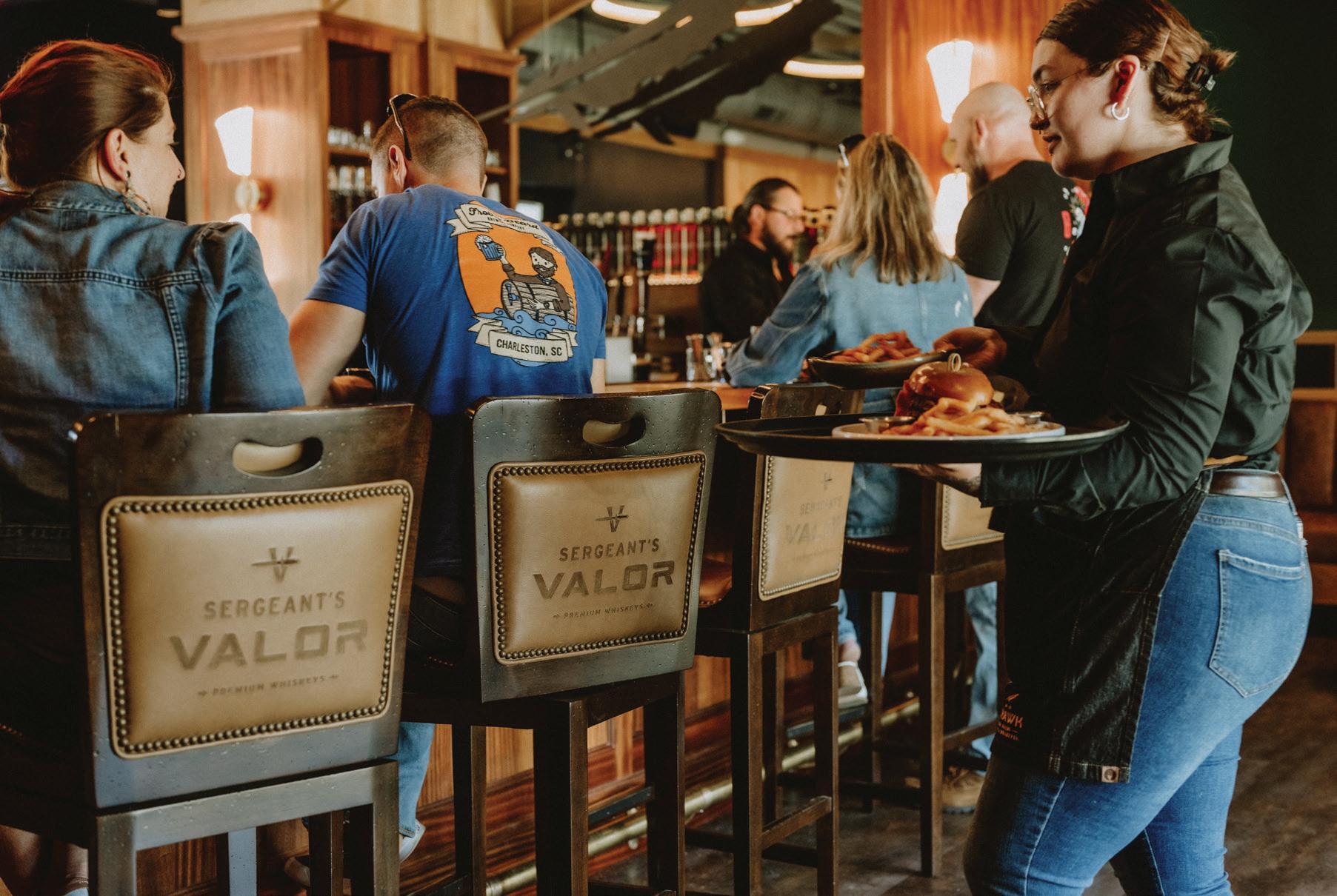
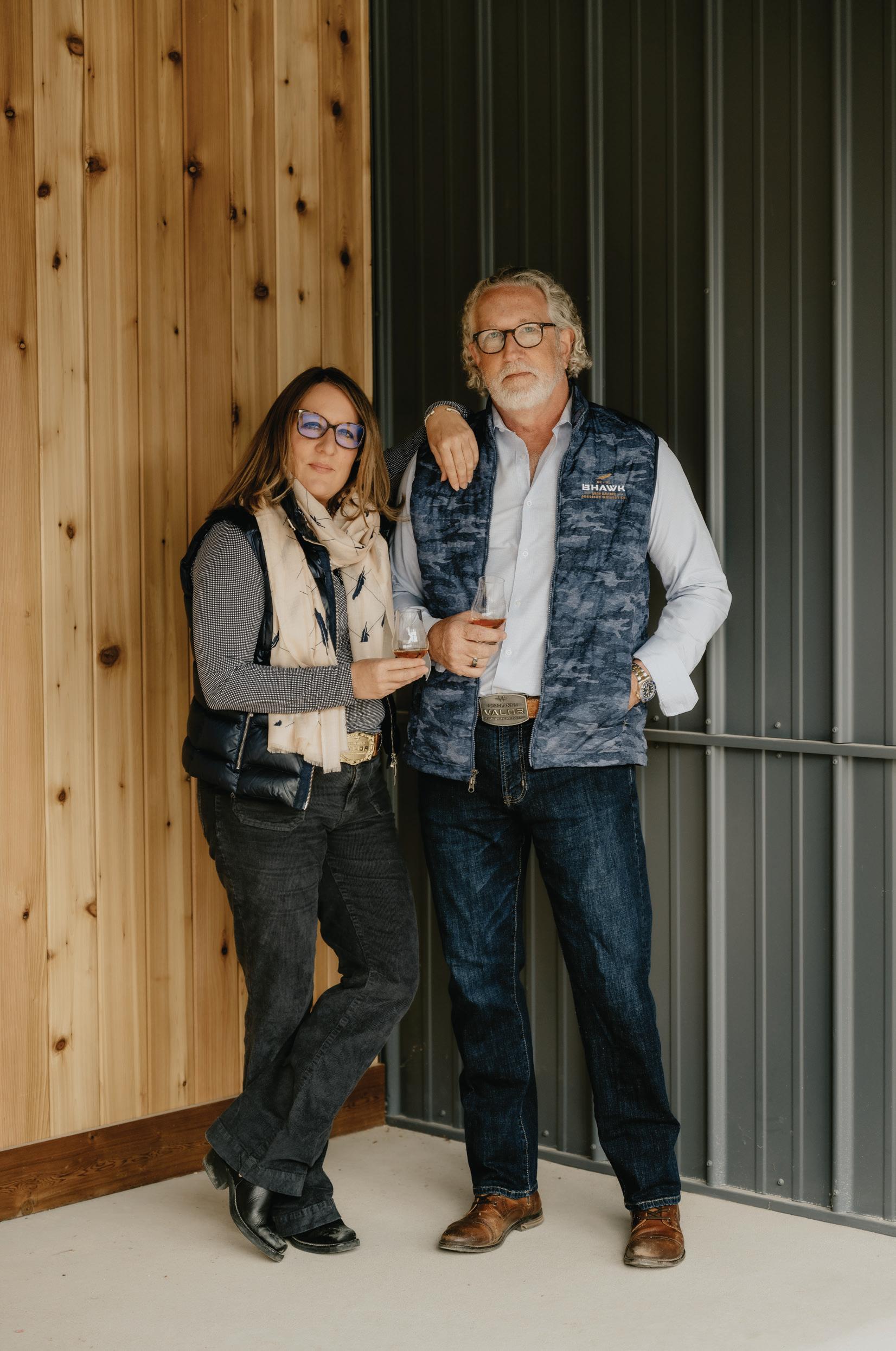
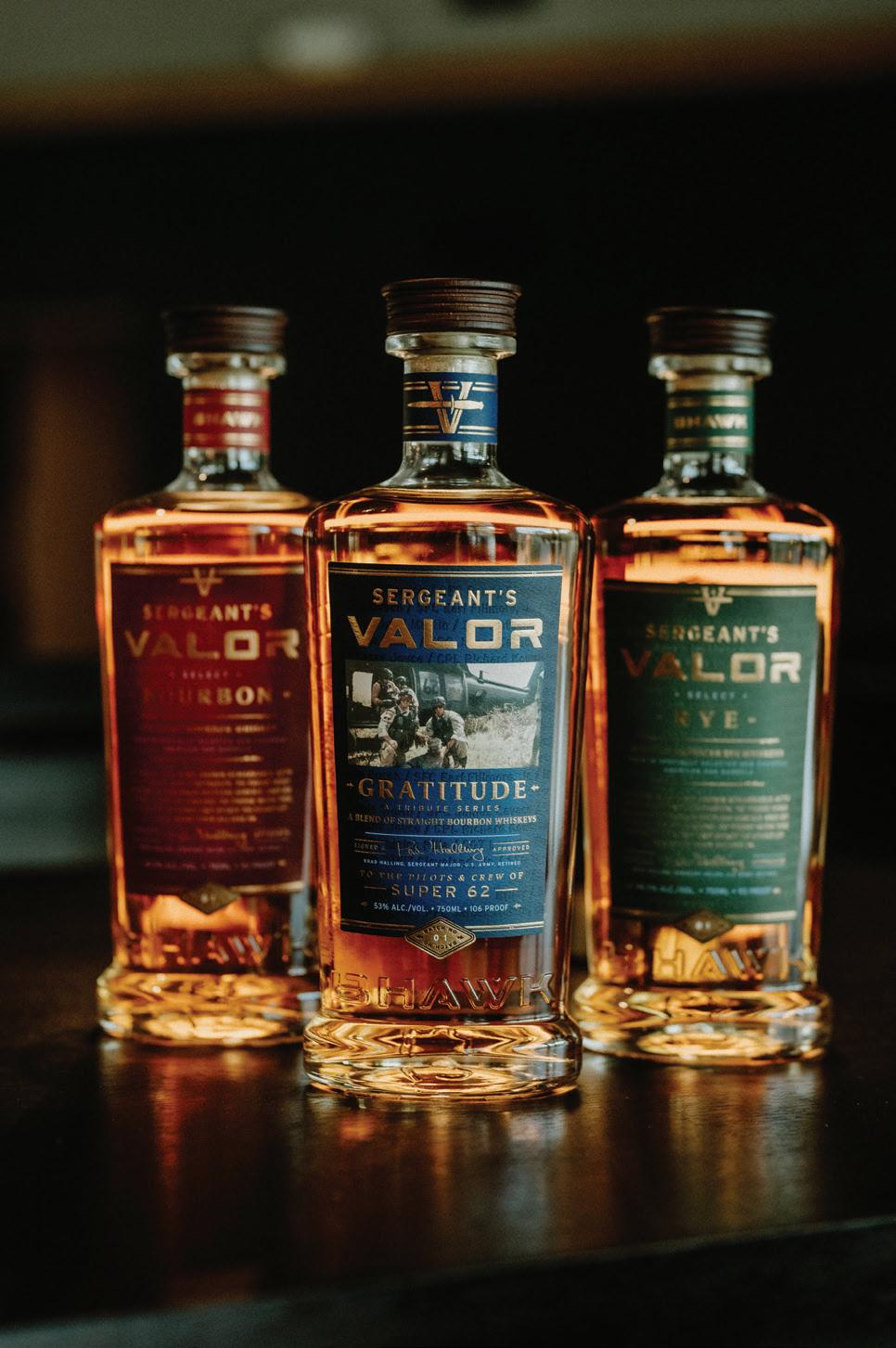
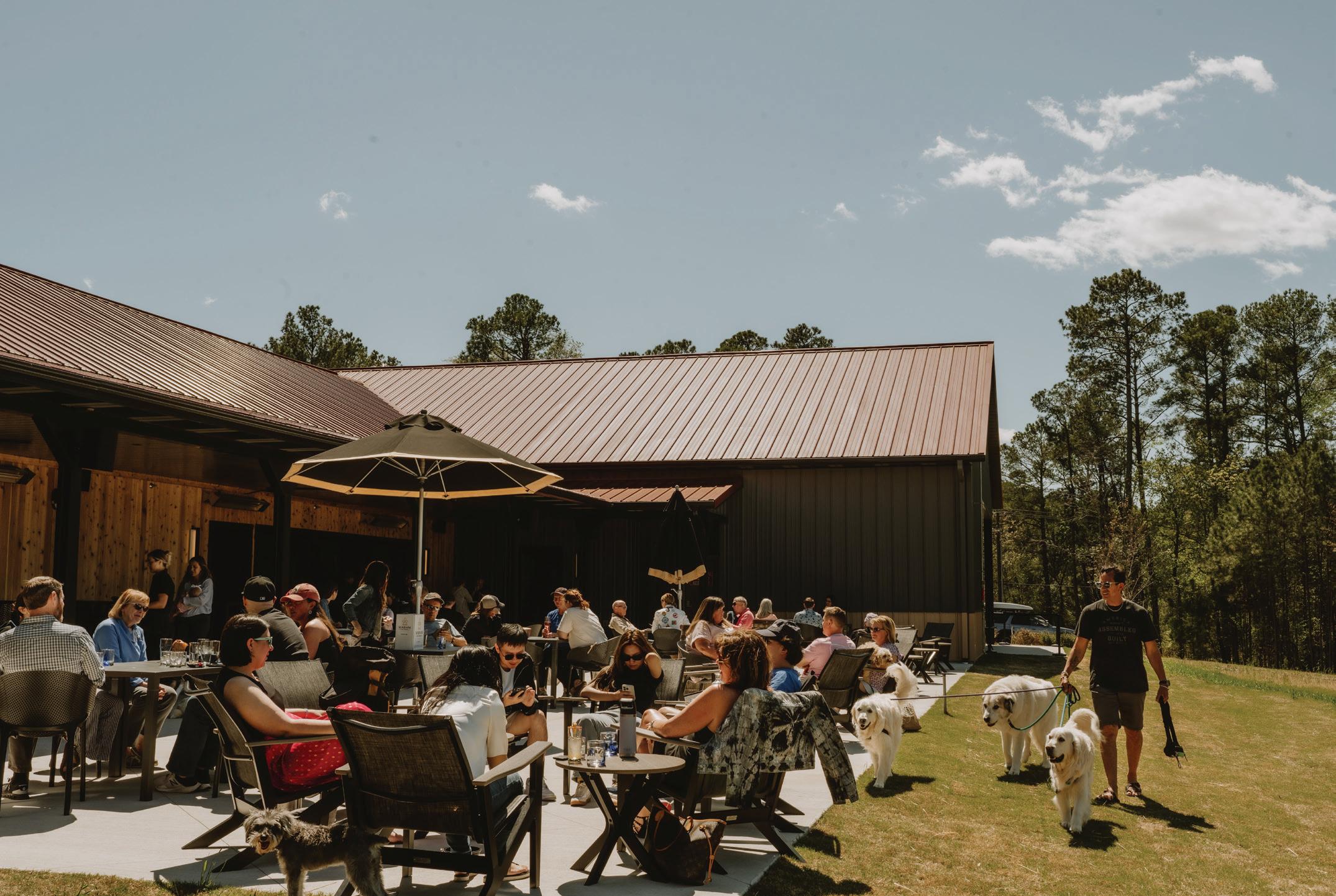
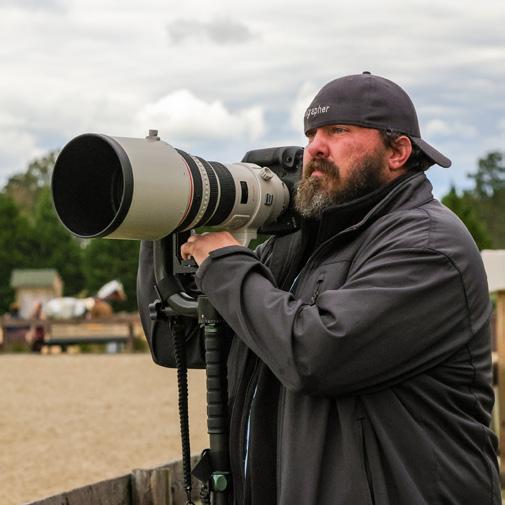
Jason Jackson is the owner of JSK Photography. Based in the Sandhills, Jason’s photography portfolio includes CBS Sports, Paramount Studios / Paramount Global CBS MaxPreps, ZUMA Press, and is an official photographer for the 2024 Polocrosse World Cup in South Africa. He specializes in sports photography, capturing the emotion of various equestrian sports, golf, basketball, and baseball to name a few.
We caught up with Jason to get the inside scoop capturing the highs and lows of golf.
You shoot a lot of fast paced/intense sports. How does capturing the intensity of golf differ?
Golf can be a unique challenge compared to other sports due to its quiet and complex environment. Understanding of the game and the key moments that define a round are truly important. Moments like a crucial putt, a challenging tee shot, or a player’s reaction to a bad break. I’m the most focused in those moments and ready to capture them when they occur.
Unlike team sports, my attention goes to individual players. Capturing the emotion and concentration of the golfer as they navigate the course can create powerful images that convey the pressure and focus of the game. I always find myself searching for those moments but what makes them truly unique is the course itself.
I love the feel of a golf course backdrop. They have sprawling landscapes, beautiful water features and
lush greens all wrapped together to make some tough and challenging terrains. I take every opportunity to use its natural beauty to enhance my images, and create a sense of drama and intensity.
Golf is such a focused game. How do you capture the moment without feeling like you are adding to the pressure?
Experience plays a large role, as well as the equipment I use. There’s a delicate balance between capturing the action and respecting the players’ concentration and focus. I start with being respectful. I try to blend into the background as much as possible, stay out of their line of sight, and I avoid making any noises or sudden movements that could startle the players, especially in their backswing.
My biggest asset is my Canon telephoto lenses. They allow me to capture intimate moments from a distance without intruding on the players’ space.
What have been the memorable moments to have captured?
All of the High School State Championships on the courses at Pinehurst that I’ve covered are memorable. I love photographing the reactions from these kids and the joy they have from playing on a world class course. If I had to pick one, it would be a players reaction to an eagle she hit on 18 at the girls state championship at Pinehurst #6.

 Arnie, one of four Llamas at the Talamore Golf Course and Resort.
Arnie, one of four Llamas at the Talamore Golf Course and Resort.
H“Hey! What do we have over here?”
Golf courses are known to be flanked by curious landmarks. Maybe it’s the dramatic cliffs of Pebble Beach, or the jagged coast of Cypress Point. Or perhaps it’s mountains, rivers, mansions, or theme parks. Most of these attractions are apparent, while some of them have to be discovered while searching the woods for your ‘lucky’ ball.
For players at Talamore Golf Course, a slightly misplaced line on Hole 14 might leave you gazing at a fence line, wondering what they could possibly be keeping as pets beside a golf course… that is, if the llama’s on the mailboxes on the drive in weren’t enough of a hint.
‘gimmicky’ was overshadowed when the initial score cards were printed with llamas on them. Today, not only is the gift shop filled with llama merchandise, but the entire resort has little odes to the famous, fluffy creatures.
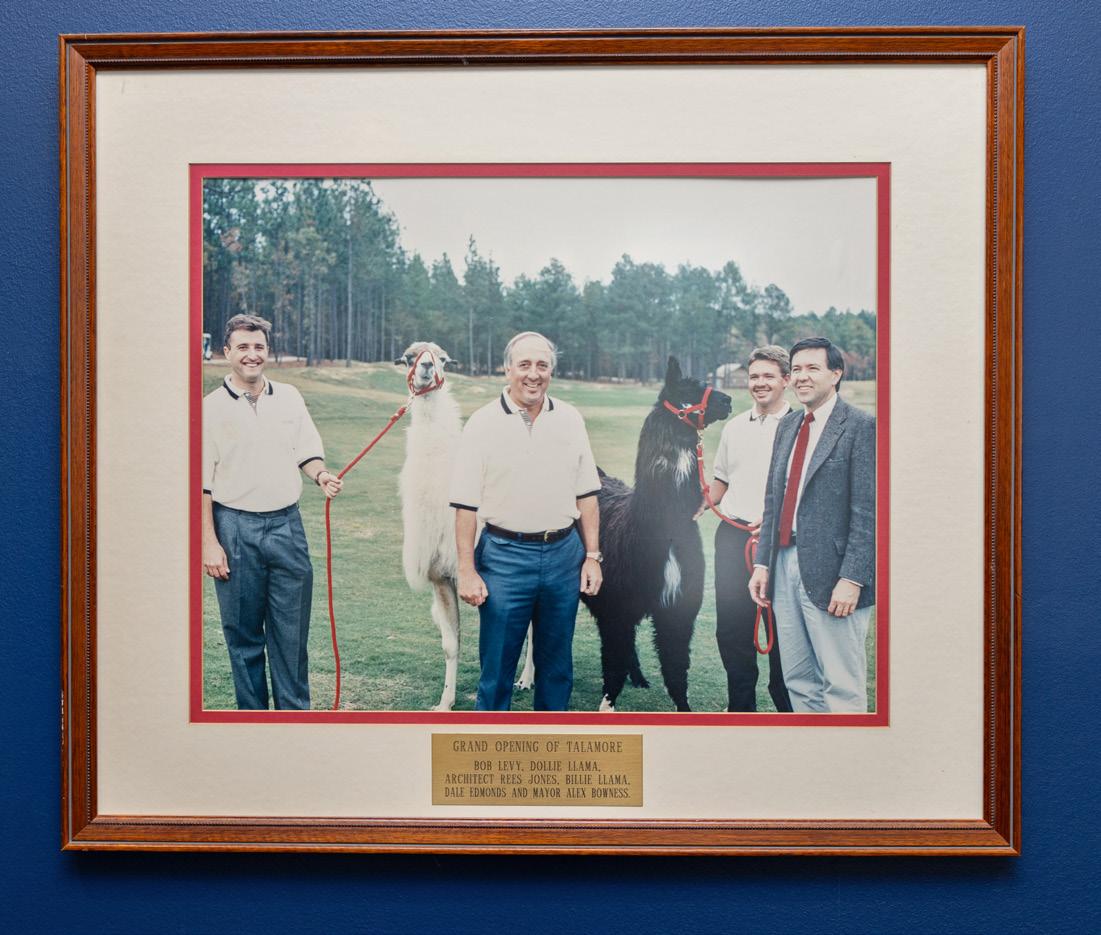
Talamore Golf Course first opened in 1991 to lots of anticipation and excitement. Sure, the idea of another course designed by legendary architect, Rees Jones coming to the Pinehurst area promised to attract serious golf enthusiasts, but the idea of having a caddy with four legs that might possibly spit on you was most intriguing.
The ‘hidden’ llamas were by design. Originally, course management didn’t want to make it seem like the llamas were a stunt to cover up a weak course. The initial desire to not seem
The resort’s logo - an outline of a llama with a flagstick - was once displayed in yellow and green colors, close to that of the famous Augusta National Golf Club. Talamore received a cease-anddesist order from the notable club’s attorney, stating that the logo was too similar to their established brand. The note is now on display in the golf shop, where the logo is widely used, minus the yellow and green hues.
The first journalist to feature the Talamore llamas was a writer for the Associated Press who came to play the course. His article was published in over 300 newspapers, garnering millions worth of free publicity. The untraditional caddies were even featured in News Of The Weird, under the heading The Entrepreneurial Spirit. The course may have been top notch, but the llamas were helping to put Talamore on the map.
The original llama caddies at Talamore were Dollie and Billy, purchased from a breeder in Vermont. They were each fitted with a special ‘saddle’ to carry the player’s bags, and had handlers to lead them as well as perform caddy duties that were beyond the llamas’ capabilities. Although they may not have been able to read the green, they definitely had a way with superstitious-type golfers.
In 1992, the Talamore golf pro, John McDougal, was quoted in the Associated Press article saying “They have a little grunt. Before good shots they tend to moan. But if it’s going to be a bad shot, they don’t say anything.” Apparently this altered the method of some golfers, wanting to get that approving grunt before making the shot.
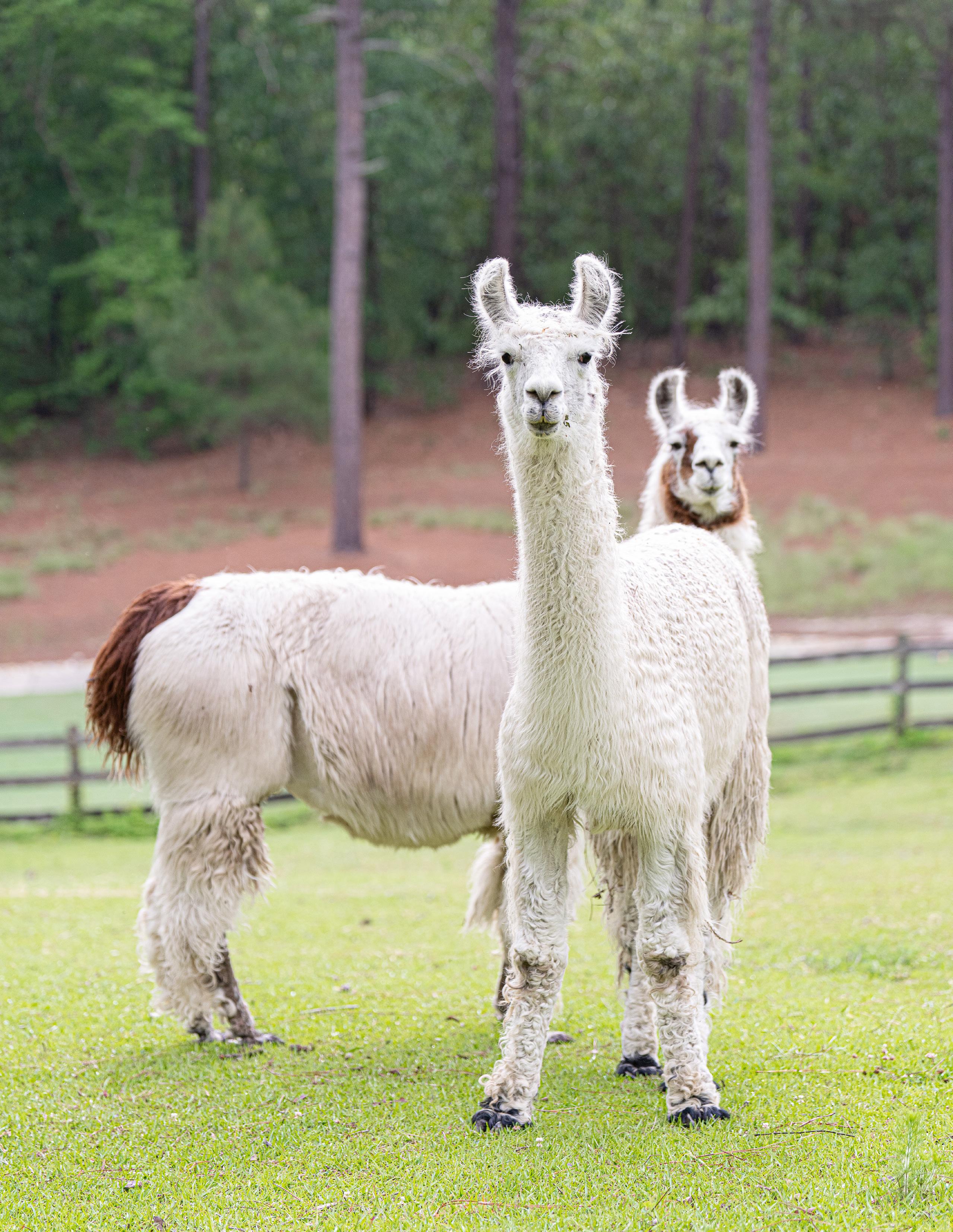
Being curious creatures by nature, training the llamas to be caddies looked less like a punishment/reward system, and more like a game. Luckily, llamas are very interested in people, and are driven by a strong herd dynamic, so getting them to be interested in a new task, and hang out with their friends (two- and four- legged) wasn’t all that hard. Adding their own comedic timing to poorly hit balls was purely instinct.
While no longer employed as caddies— General Manager Matt Hauser notes that the caddy program ended in 2005 due to concerns that they were slowing down the pace of play and generally a distraction, bringing non-golfers onto the course—llamas are still a permanent fixture on the course.
There are four llamas who currently reside in the pasture beside Hole 14. Just like their predecessors, these llamas are docile and used to attention, making the risk of being spit on very minimal. Good thing since players, social media influencers, and the general public seek the location to grab the perfect selfie with these furry friends.
The “old man” of the group, Tally, just might be mistaken for a fuzzy rock. He enjoys spending his days lounging in the sandpit, just the opposite of the golfers trying to coax him over for a photo opportunity.
The ‘llama momma’ of the herd, Camellia, ensures all rules are followed. Like any good mother figure, she’ll be on the lookout for anyone fudging the rules.
Cammie (as she is known to her friends) and her first son, Arnie, (named after Arnold Palmer who designed Talamore’s sister course, Mid South Club) arrived in 2021 as companions to Tally. They came by way of On the Fritz Farm, a llama breeder in Greensboro, NC. Arnie is the attention ham of the fam, always knowing when to turn up the entertainment.
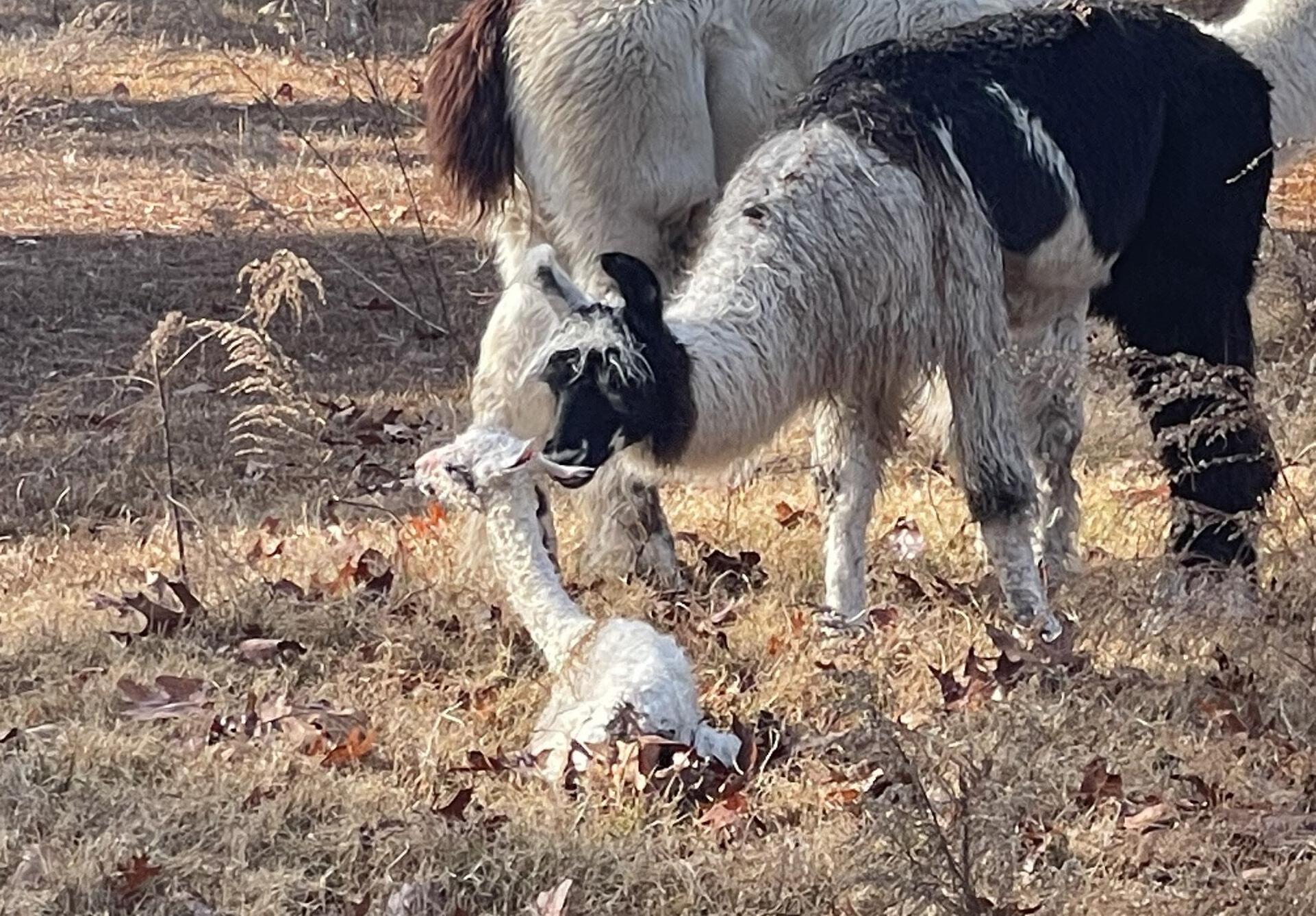
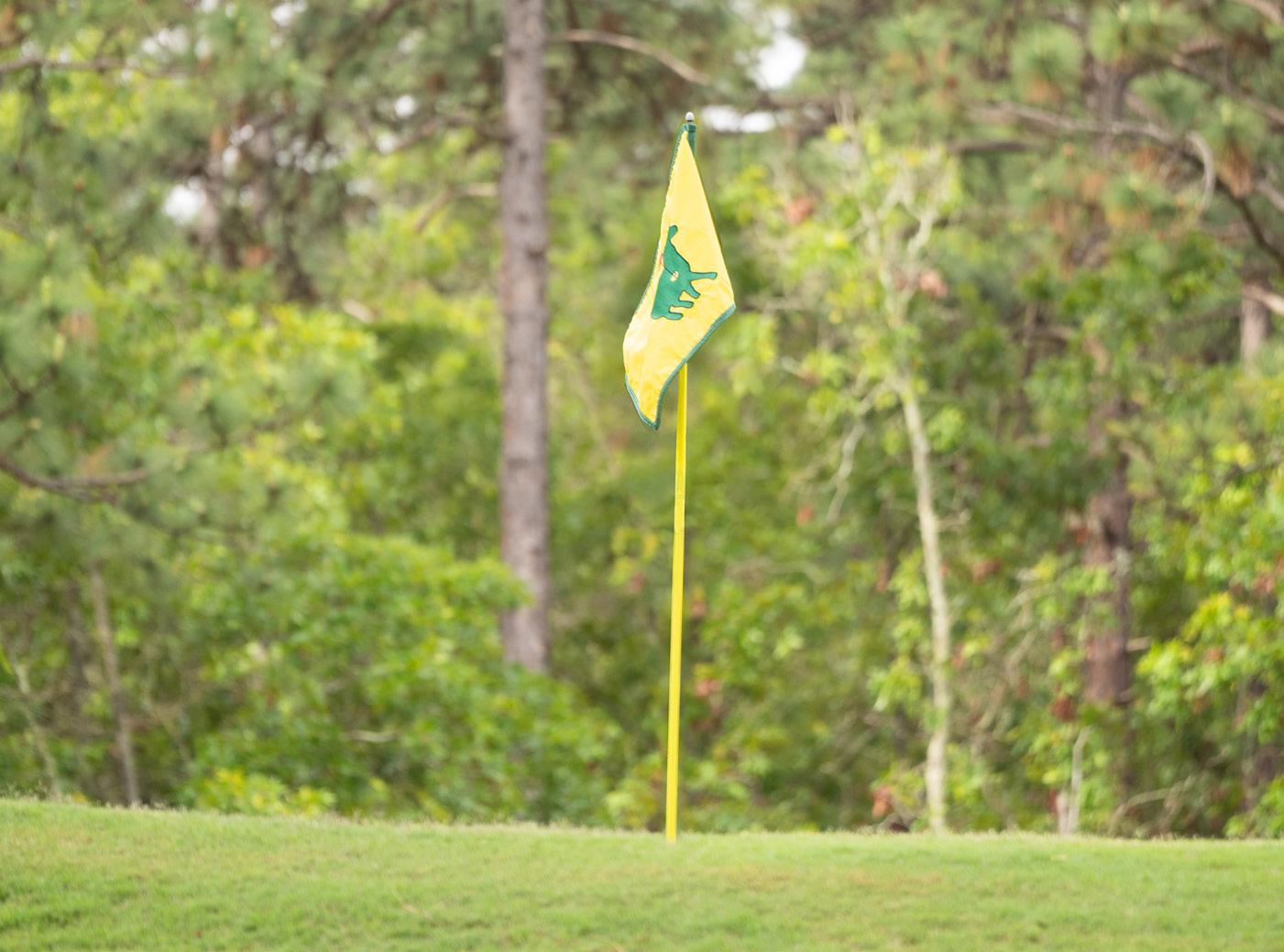
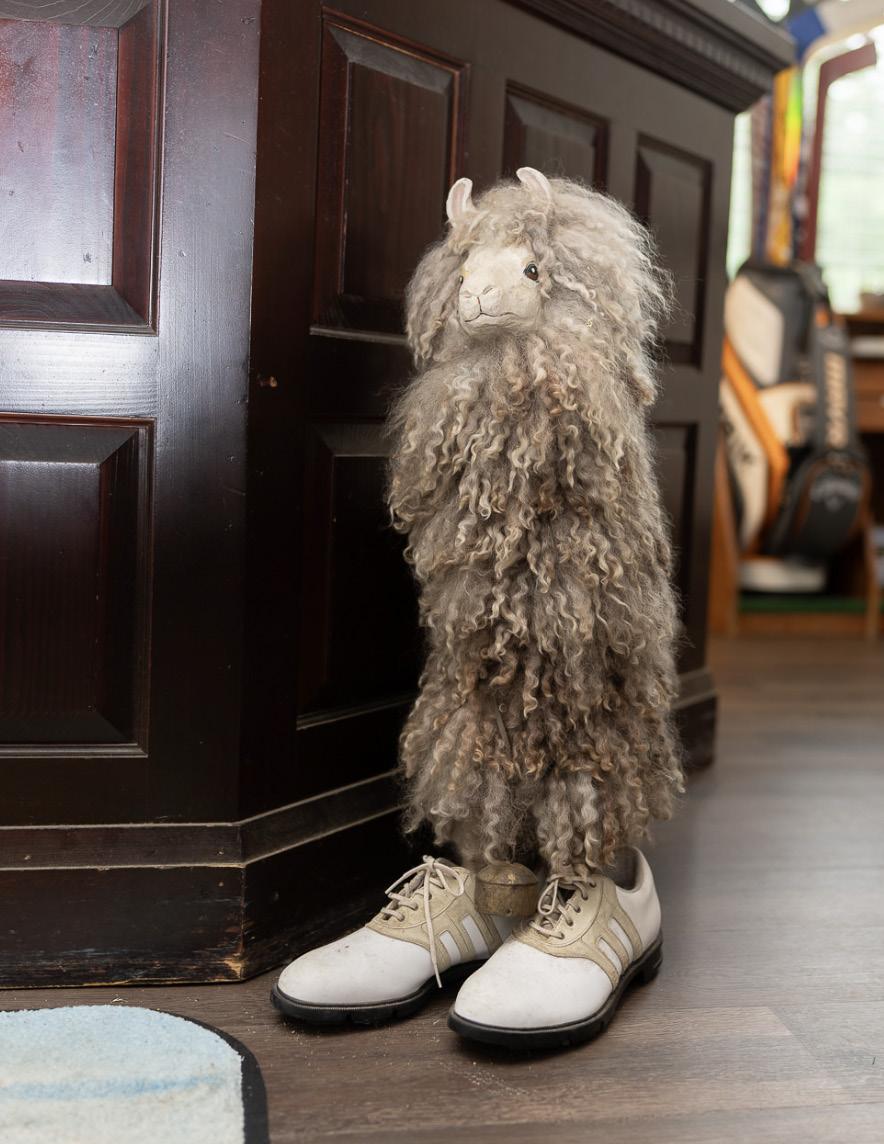

Her second son, Jones, named for original course architect Rees Jones, was an early Christmas gift, born in December 2021. His birth was featured on Talamore’s live “llama cam” via Raleigh news outlet WRAL.
Nikki Conforti, a golf package coordinator at Talamore, says that while the llamas aren’t particularly cuddly or fond of scratches, they do each have their own personality and opinions. “They don’t spit! But they do like to lick faces.”
The Talamore llamas may attract curious visitors and offer a unique golfing experience, the course itself is no
fading flower. Some of its awards and recognitions include: Best New Golf Course in the South by Golf Digest; Top 5 New Courses by Golf Digest; Voted top 4 courses in North Carolina by Golf Digest; One of America’s Best Courses by Golfweek; Top 10 Courses in the Pinehurst Area by Pinehurst Magazine; North Carolina Golf Course of the Year by National Golf Course Owners Association; and Top 100 Courses in America by GolfLink. com.
Having an unusual attraction lends itself to some urban legends, like a loose llama running down Midland Road, on the lookout for greener fairways (that
one is actually true). But even though the resort clubhouse offers a “good ‘ol southern pig pickin ’and all the fixin’s” each Monday and Thursday night in season, you won’t be finding any llama burgers on the menu.
Talamore is not the only golf course to utilize alternative caddies. While they may be less than helpful in club selections, Silvies Valley Ranch in Oregon has goats to tote around clubs, while dogs, elephants, and donkeys have also been known to make their way onto the fairways.
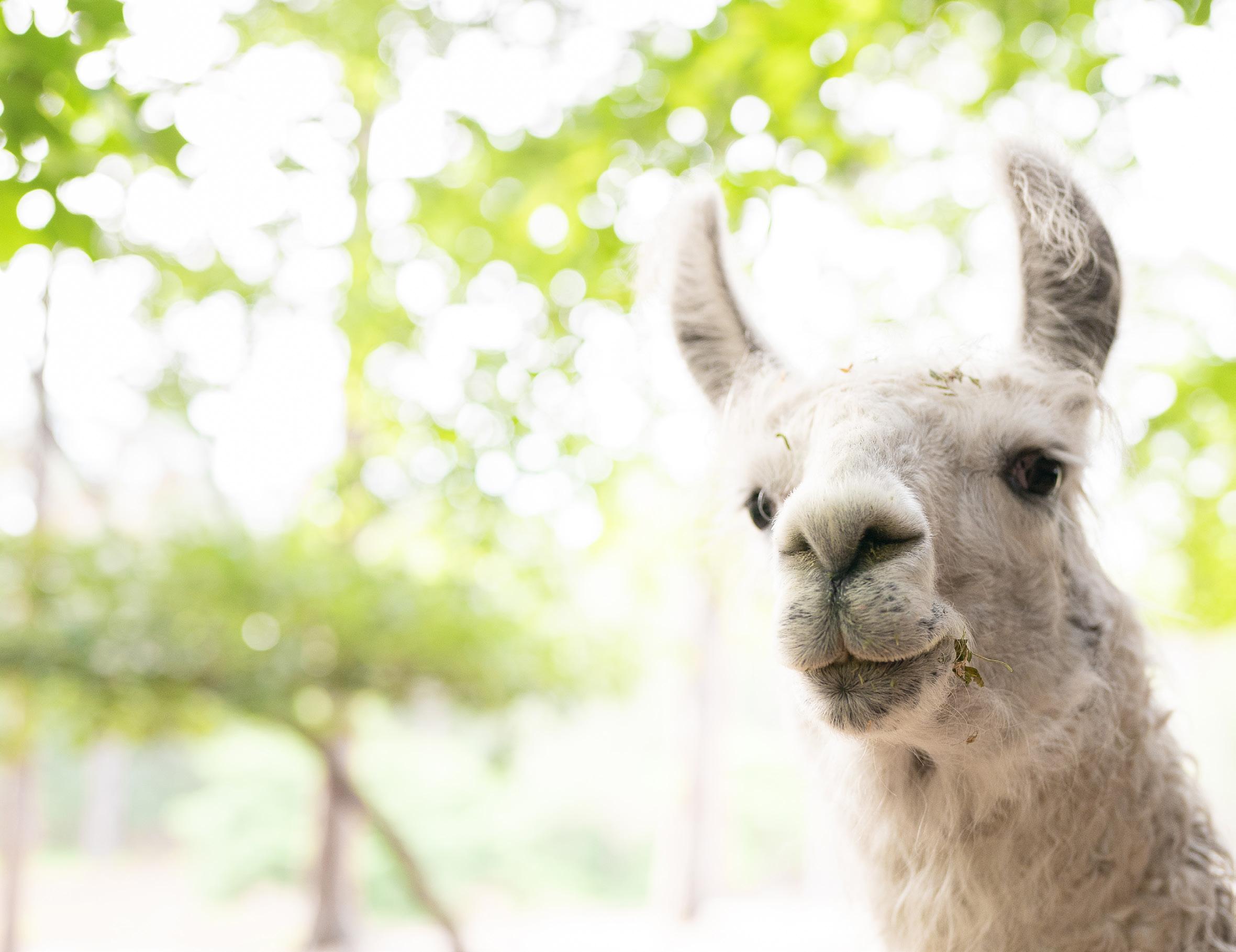
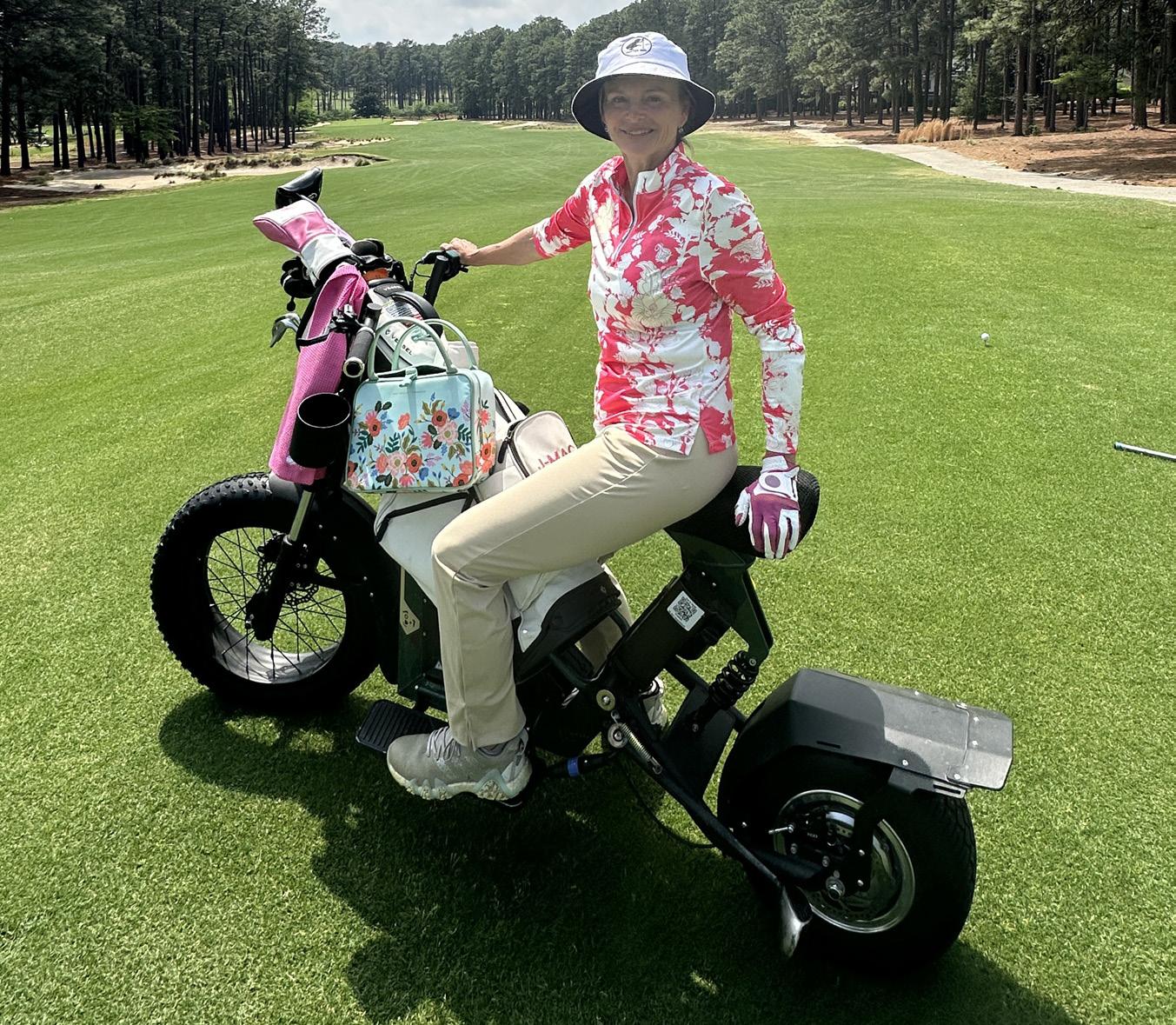
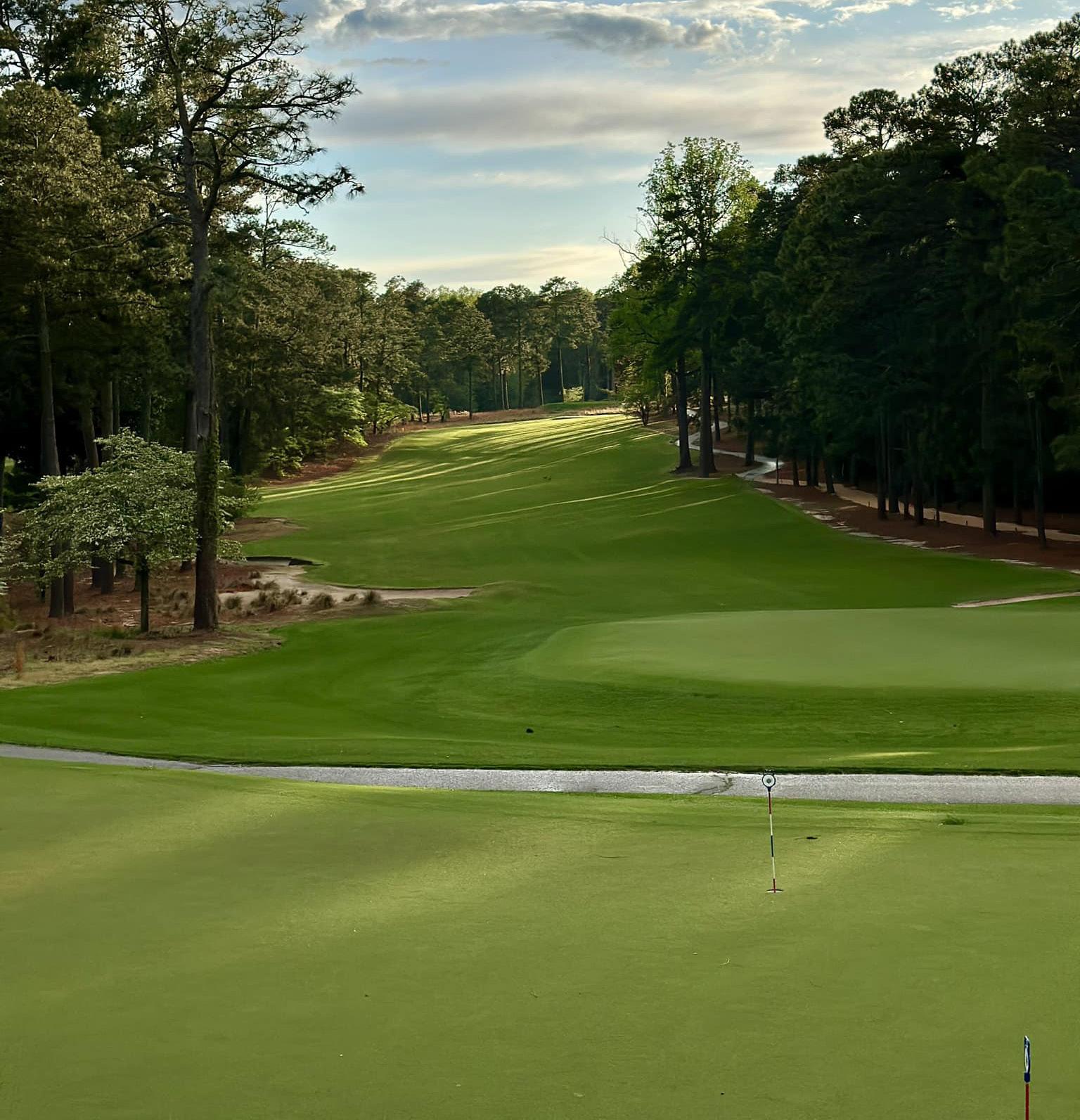

Pinehurst has a remarkable history, celebrated for its role in popularizing golf in the 20th century. Founded in 1895 by James Walker Tufts, the creation of the resort was a miraculous achievement in a land so mistreated after the Civil War. Clear-cutting had left behind a wasteland and the notion of luring people to the region was viewed by many as ridiculous. But naysayers were proven wrong as Tufts began to create his New Englandstyle village in the North Carolina Sandhills.
The region had been cut off from much of the outside world until the railroad came through in the late 1800s. The leading cash crop was resin bled from longleaf pines for the turpentine, pitch and tar industry. As the pine trees dwindled, lumbermen cut them down, and the aromatic smell of sap filled the air. Tuberculosis was the scourge of the age and “pine ozone” supposedly had healing qualities. This prompted Tufts to first market his enterprise as a health resort for those suffering from tuberculosis. When the condition was discovered to be an infectious disease, he quickly shifted his focus to recreation.
From the beginning, Tufts saw his undertaking as a “semi-philanthropic”
venture. His intent was to create a place for middle-class Americans to enjoy, while helping to lift the Sandhills out of poverty. He was influenced, at least in part, by the philosophy of Harvard clergyman Edward Everett Hale who inspired him to leverage his self-made fortune for the benefit of those of moderate income.
Warren Manning from Frederick Law Olmsted’s firm to supervise the planting of an estimated 226,000 trees and shrubs. As late as 1909, Pinehurst was a “free range” district with livestock, packs of wild dogs and razorback hogs wandering at will. A fence surrounded the resort and leaving a gate open resulted in being fined.
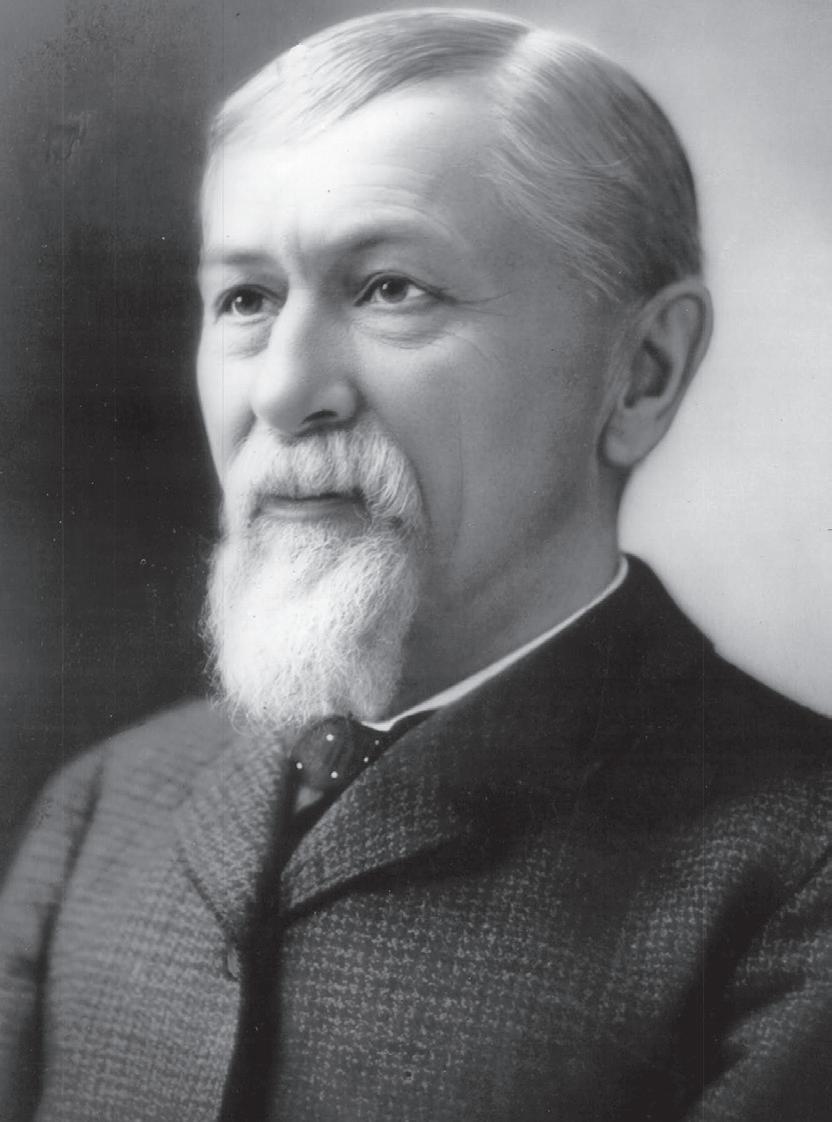
By 1896, Tufts had built a general store, dairy farm, boarding house, over 20 cottages, and the Holly Inn, followed by the Carolina Hotel in 1901. To revive the desolate setting, he engaged
Among the recreational activities at the fledgling resort were horseback riding, hunting, polo, lawn bowling, bicycling, archery, and tennis. To capitalize on the nation’s growing fascination with folklore and traditional culture, resort guests were invited to tour the countryside and visit the native population. Offerings included carriage rides to witness court in session, services at white and black churches, banjo pickings, dances, barbecues, hunting excursions, woodland rambles, and visits to turpentine stills.
Golf was not among the initial offerings.
The long-told story is that golf was first played in the village cow pasture. Tufts heard about some hotel guests hitting little white balls that disturbed the herd and that piqued his interest. In 1898, Tufts enlisted Dr. Leroy Culver to create a nine-hole course because he

had visited St. Andrews and had some knowledge of the game. Culver’s design consisted of a field with square-shaped sand greens and randomly placed tees. Primitive as it was, the course proved to be very popular. John Dunn Tucker was hired as the resort’s first golf professional in 1899. He added an additional nine holes to Culver’s course and this 18-hole layout is known today as Pinehurst No. 1.
The status of Pinehurst was fortified nationally when Tufts’ enticed Harry Vardon, the most famous golf champion of the era, to make a publicity appearance and play several exhibition rounds on the resort course. Vardon’s fame brought widespread exposure, and the March 16, 1900 issue of the Pinehurst Outlook devoted three pages to chronicle his every move on and off the course.
In the fall of 1900, Tufts hired Donald Ross, a young Scottish immigrant, to run his golf operations. Ross had trained with Thomas Mitchell Morris at St. Andrews. Ross flourished at Pinehurst, where he remained until his death in 1948. He originally served as a manager, but soon began developing fairways. His first project was a redesign of No. 1 to add bunkers across fairways and around the greens. No. 2 was his first 18-hole design, constructed in 1907.

This was followed by No. 3 in 1910, and No. 4 in 1919. He continuously updated his designs during the offseason. In his five decades at Pinehurst, he built a national reputation as one of the finest golf architects.
In the years following James Tufts’ death in 1902, the operation of the resort continued under the direction of his son and heir, Leonard Tufts. In the decades that followed, he developed Pinehurst into a world-class haven for golfers and courses were booked to capacity during peak season. Pinehurst was at the forefront of a dramatic shift in the popularity of golf, driven by mass-market advertising. Prior to this time golf had been viewed as an elite activity, but from 1916-1920 the number of weekend golfers doubled as the sport was embraced by the middle class.
World War I (1914-1918) curtailed aspects of Pinehurst, but the resort rebounded at the end of the war with renewed vigor. In 1919, air service became available between Pinehurst, Richmond, Washington, and New York, and the social world of the Sandhills came to encompass officers from neighboring Fort Bragg (now Fort Liberty), creating strong ties with the military base that continue to the present day.

Civility was encouraged among the native population through publications such as More Hospitality in Moore, issued by the Governor’s Hospitality Committee of Moore County. This 1920s booklet gave examples of proper etiquette for greeting resort guests: “sir, why don’t you get out and stretch your legs…. part of the road you’re traveling on was used by the buffalo long before the white man came to this section.”
Every good thing has its challenges, and for Leonard Tufts the efficient, economical provision of quality food for guests and residents was a major concern. He became a leading agriculturalist building “model farms” that supplied produce throughout the Sandhills. He raised Ayrshire cattle and Berkshire hogs and his dairy was among the state’s finest. At one time or other, he was president and director of the Ayrshires Breeders Association, Carolina-Virginia Ayrshire Association, North Carolina State Fair Association, and president of the Southern Berkshire Congress.
Under his watch, Pinehurst became part of a national back-to-the-land effort that sought to sustain American culture by encouraging rural people to stay on the farm. The widespread popularity of the movement sparked a tide of settlement in the region.
Adherents were known as “countrylifers,” many of them graduates of Ivy League schools. As affluent countylifers took up farming, vast estates proliferation around Pinehurst, owned by people accustomed to urban living. They wore overalls and worked the fields by day, before retiring to resort life in the evening.
The new cash crop was peaches and county-lifers, along with Pinehurst Resort, created orchards throughout the countryside. More than playtime farmers, they raised cattle, hogs and dairy cows, along with corn, cotton and tobacco, shipping their produce by rail to distribution points along the Eastern Seaboard. They held formal dances and hoedowns, masquerade balls, plays and musicals of local vintage. The spirits flowed freely – peach brandy, corn liquor, scuppernong wine.
The Wall Street Crash of 1929 proved their downfall as fortunes shrank and they retreated back to city life. In the wake of the economic downturn, Leonard Tufts retired to be succeeded by his son, Richard S. Tufts. In any case, Leonard Tufts and the idealistic county-lifers uplifted the entire region – leveraging family fortunes and connections to shape the destiny of Pinehurst.
In 1970, Diamondhead Corporation purchased Pinehurst Resort after three generations of Tufts Family ownership. In 1984, ClubCorp, founded by Robert H. Dedman Sr., bought the property. Since that time, the Dedman family has reinvigorated the status of Pinehurst as stewards of the ongoing tradition of American golf.
The best champions in the world have played Pinehurst, and No. 2 remains a Donald Ross masterpiece. This course has hosted more single golf championships than any other in the country including: the 1936
PGA Championship, the 1951 Ryder Cup Matches, the 1962 and 2008 U.S. Amateur Championships, the 1989 U.S. Women’s Amateur Championship, the 1991 and 1992 TOUR Championships, the 1994 U.S. Senior Open, the 1999 and 2005 U.S. Open Championship, and backto-back U.S. Open and U.S. Women’s Open Championships in 2014. Besides the 2024 championship, Pinehurst will be an anchor site for four additional U.S. Opens in 2029, 2035, 2041, and 2047.
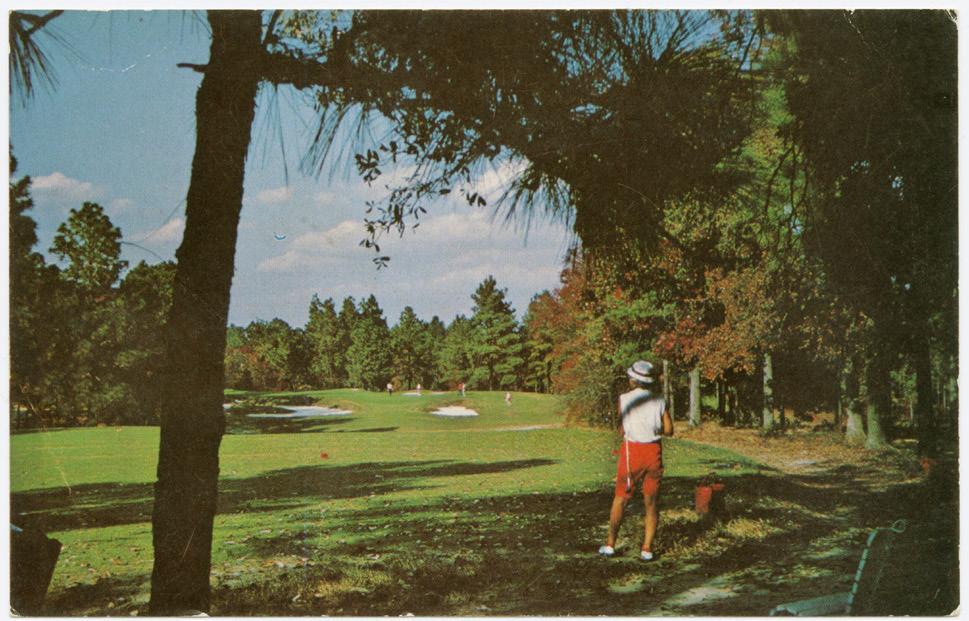
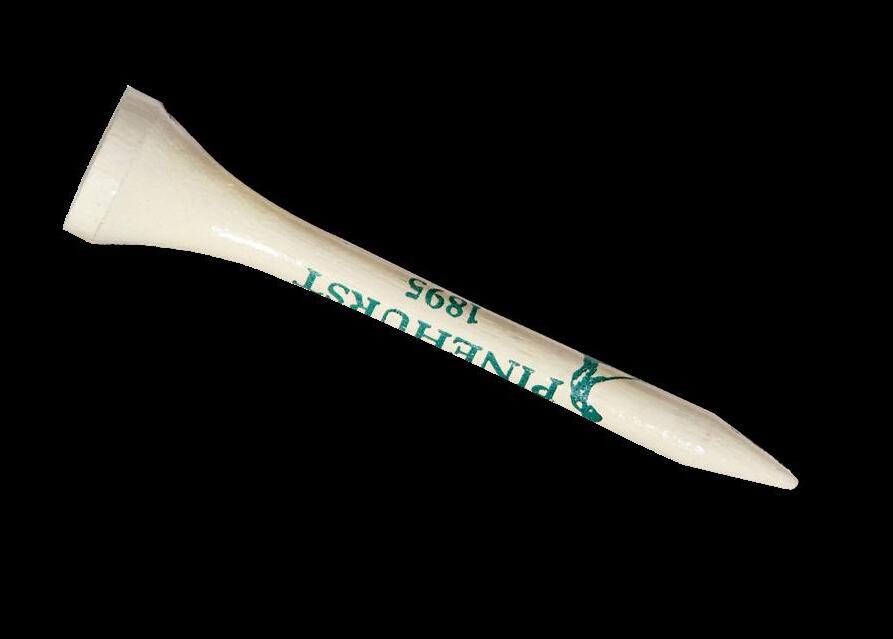
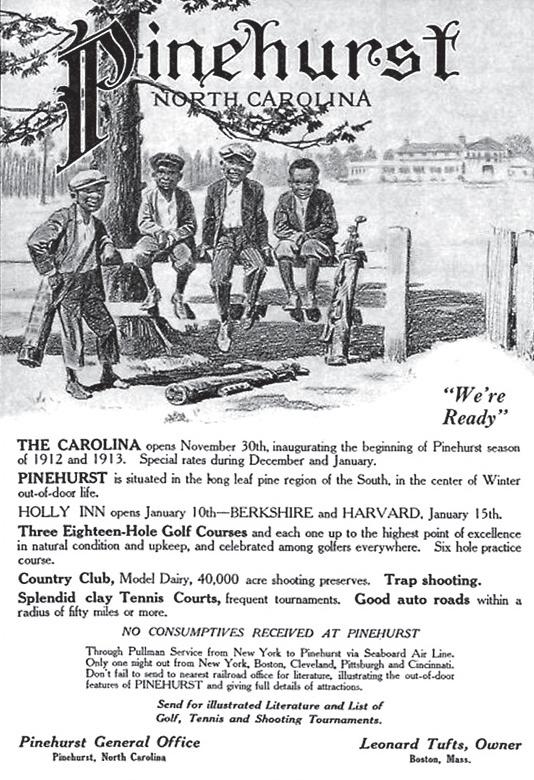
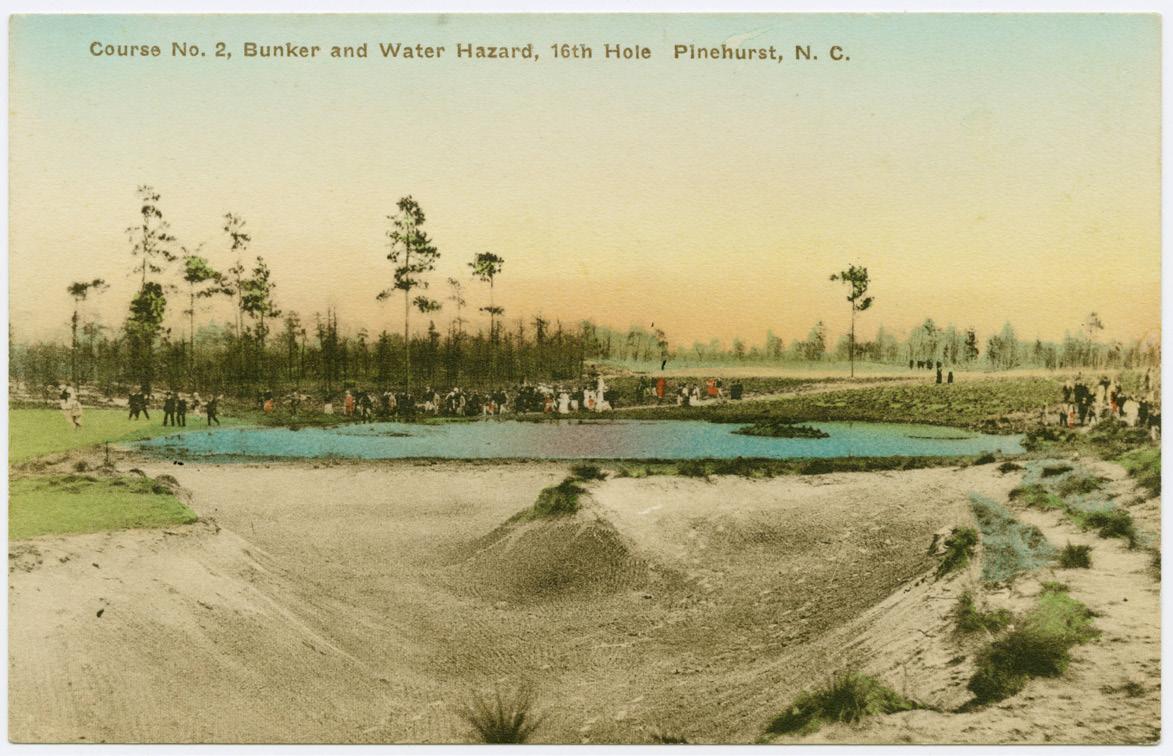
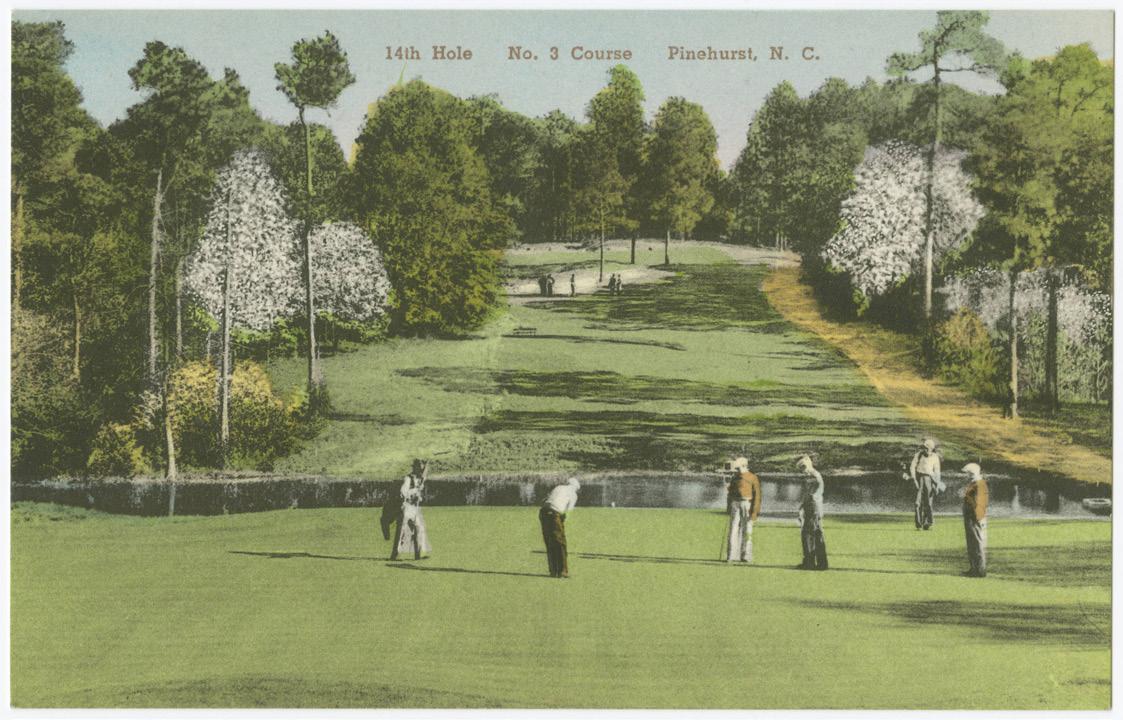


“Mike Lerario, and Crispian Consulting, have been an integral part of Hibbett | Gear’s Leader Development program for years. In addition to using his books, Mike frequently conducts professional development programs for us, teaches sessions, and conducts executive coaching. I highly recommend you join me and the tens of thousands of other people who believe in its effectiveness. Take it from me, you must make Leadership in Balance and Management in Balance part of your leadership journey.”
— Mike Longo, CEO, Hibbet Inc.

Crispian Consulting offers specialized consulting services for individuals and companies solving leadership and process challenges. www.bethefulcrum.com

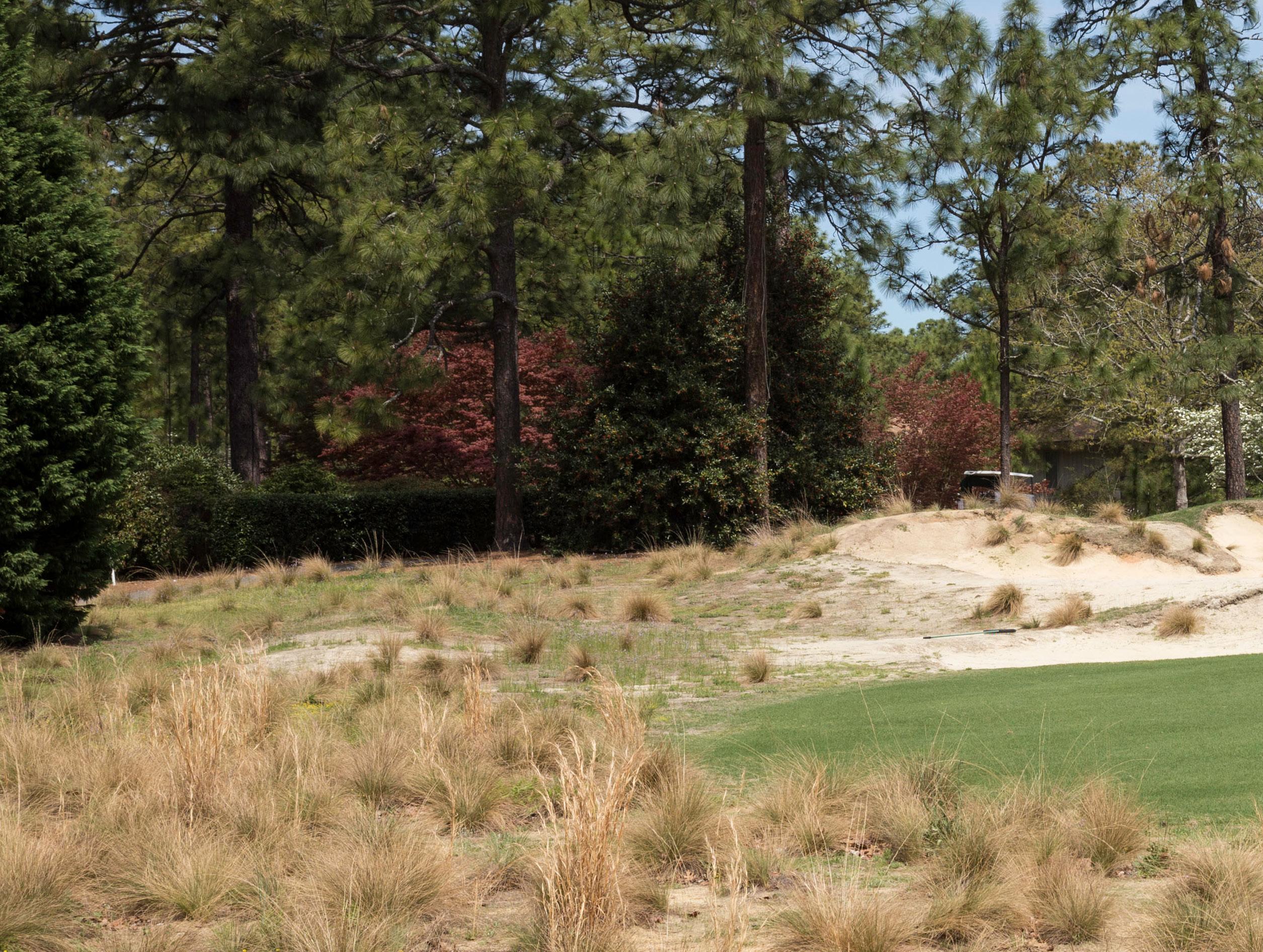
Images of golf courses from around t Images of golf courses from around the world may vary when it comes to back drops, but the picturesque rolling green fairways dotted with golden sand and an elusive flag gently waving in the distance is on par. They provide a peaceful respite from development, crowds of people, and traffic jams.
A golf course’s footprint averages 100200 acres. The good news is that is 100-200 acres where grass, trees and nature will not be replaced by concrete. The bad news is that these spaces require large amounts of irrigation, maintenance, and grooming that often displaces the natural ecosystem.
Let’s start with how those fairways stay so lush and green.
The irrigation system of a typical golf course is a complex network of pipes, valves, and pumps that feed in ground sprinklers. There are typically 5001000 of these in-ground sprinklers on a 9 hole course with some courses
numbering far into the thousands. This system varies depending on the soil, temperature, and other environmental factors, but the moral of the story is that a lot of water is required to keep the greens green.
The impact of this amount of water usage is not lost on course management and many practices are implemented to help reduce the effects, like:
• Mandatory water use reductions - particularly in regions that are prone to drought, golf courses may be restricted on their irrigation frequency, watering hours, and overall water usage.
• Efficient irrigation technologycourses are investing in advanced technology using weather-based irrigation controllers, soil moisture sensors, and precise systems to optimize water use.
• Xeriscaping and native landscaping - many golf courses incorporate xeriscaping principles (landscaping that reduces or eliminates the need
for irrigation) and native plantings into their landscaping designs to minimize water demand.
• Water recycling and reuse - by capturing and treating runoff, greywater, and wastewater for reuse, courses reduce the reliance on freshwater sources, thus minimizing the environmental impact.
• Government incentives - in some cases, there are incentives or rebates available for courses that implement water conservation practices.
• Educational outreach programs - some courses give back to the community by promoting water conservation practices and raise awareness about the importance of water conservation practices.
Part of the water conservation effort also involves reducing the amount of turf that makes up a course, leaving more space for the natural habitat to thrive. A little over a decade ago,
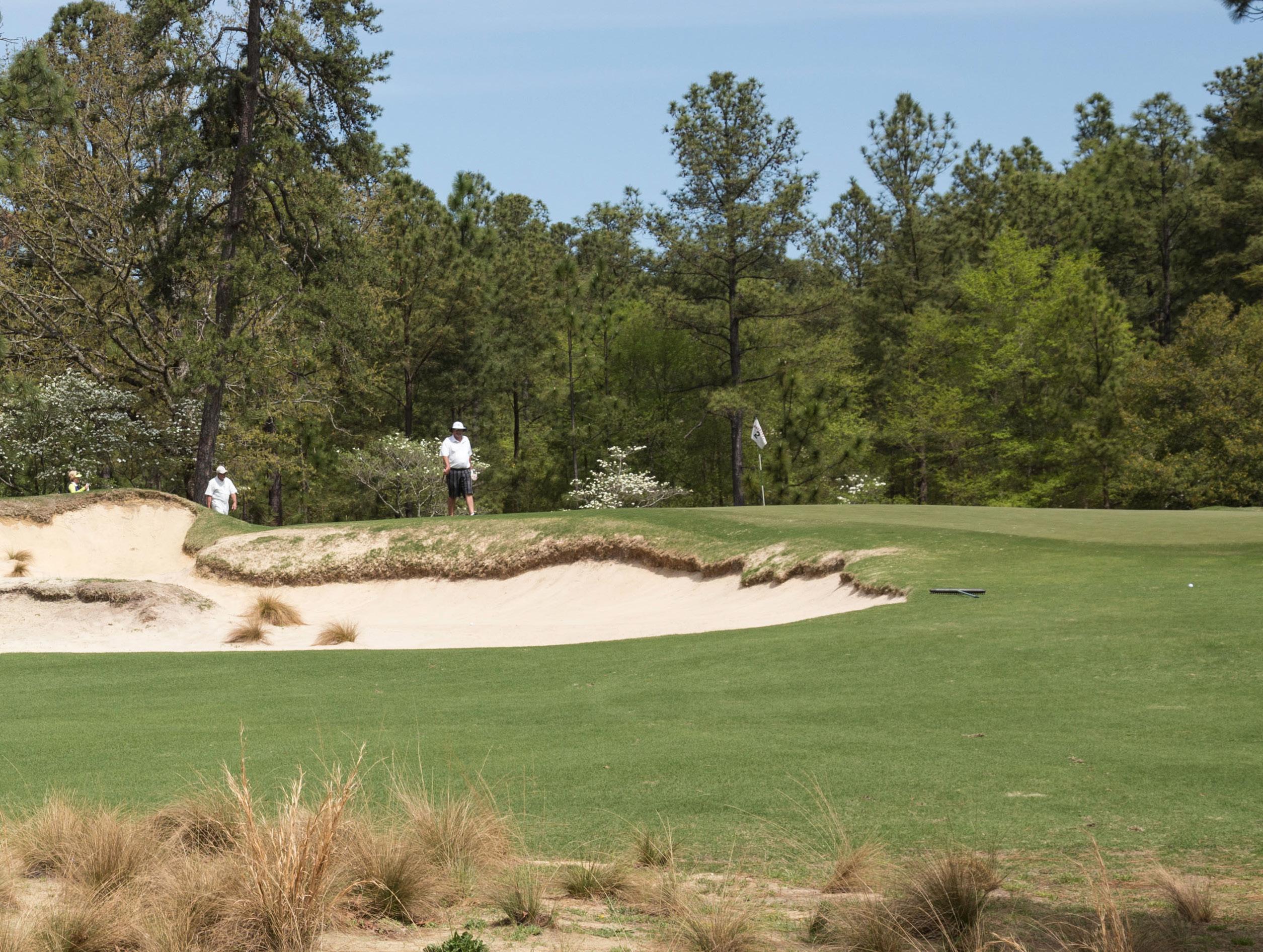
course architects Bill Coore and Ben Crenshaw worked to give Pinehurst No. 2 a facelift by turning back time. They examined the original layout of the fairways, removing 36.2 acres of turf that had expanded to basically cover treeline to treeline.
The removed turf was made available to the community, being used in yards, playgrounds, and anyone else who could use it.
Coore and Crenshaw have partnered for projects all over the country, honing in their process of using as little manicured turf as possible. Some states, like Arizona, have put limits on the acreage of manicured turf allowed per course. By examining how to adhere to these rules, they have discovered a more natural playing game, and places where natural habitat can enhance the players experience.
The reduction in turf not only reduced the need for water and management. It minimized disturbance to natural areas, reducing the use of chemical inputs, and promoting habitat restoration
“We allowed the exposed sandy areas to recover on their own with native plants, with 75 identified plants,” said Bob Farren, Director of Golf Course Management for Pinehurst Resort and Country Club. “We took the approach of the classic definition that a plant doesn’t become a ‘weed’ until it is no longer wanted.”
“We took the approach of the classic definition that a plant doesn’t become a “weed” until it is no longer wanted.”
Pinehurst’s thoughtful approach to water conservation isn’t limited to just the turf that requires irrigation.
“We do not use any ‘groundwater’ wells or potable water for irrigation on any of our courses or landscapes,” Farren emphasized. “We also provide water for a number of other areas throughout the Village of Pinehurst
and NCDOT landscape needs, perhaps the most significant being part of Midland Road and the Traffic Circle. The Pinehurst Harness Track also uses the water from our system to manage the Riding Tracks. We feel this is a great representation of our Best Management Practices (BMP’s) that we use in our approach for everything we do.”
Farren considers these practices more of a cultural approach rather than having standards or rules. “The right thing just seems to come naturally or logically when taking that approach,” he reflects.
The native plants and animals that have been re-established by these practices are part of the Longleaf Pine Wiregrass Ecosystem. This ecosystem is characterized by the iconic tall, straight longleaf pine trees and an understory dominated by wiregrass. This habitat supports a diverse array of plant and animal species. Careful land management practices such as prescribed burning and the habitat restoration efforts work to mimic the
natural processes that have shaped this ecosystem for centuries.
“I feel each of our courses recognize and acknowledge the uniqueness of the ecosystem of the Sandhills region that makes up all of Pinehurst,” reflected Farren. “Our property is the first private landowner to become part of the US Fish and Wildlife’s Safe Harbor Program to protect the habitats of endangered species, in our case the Red Cockaded Woodpecker.”
The Red Cockaded Woodpecker has found itself on the endangered species list after decades of declining availability of habitat. These birds require mature longleaf pine trees with suitable cavities for nesting, making them highly dependent on wellmanaged pine ecosystems.
They are not the only Sandhills natives feeling the squeeze of development. The Bachman’s Sparrow is considered ‘threatened’, while the Eastern Diamondback Rattlesnake, and the Sandhills Lily both are listed as ‘species of concern’.
The ongoing efforts to maintain and restore the natural wild side of Pinehurst is not limited to one course or one area of focus.
“The restoration of Pinehurst No.2 under the direction of Bill Coore and Ben Crenshaw set us on a very successful path of conservation and set our path for many things since that time,” Farren explained. “The success of No.2 led to many other successes including The Cradle, Pinehurst No.4 and Pinehurst No.10 that show much of the same DNA and cultural approaches.”
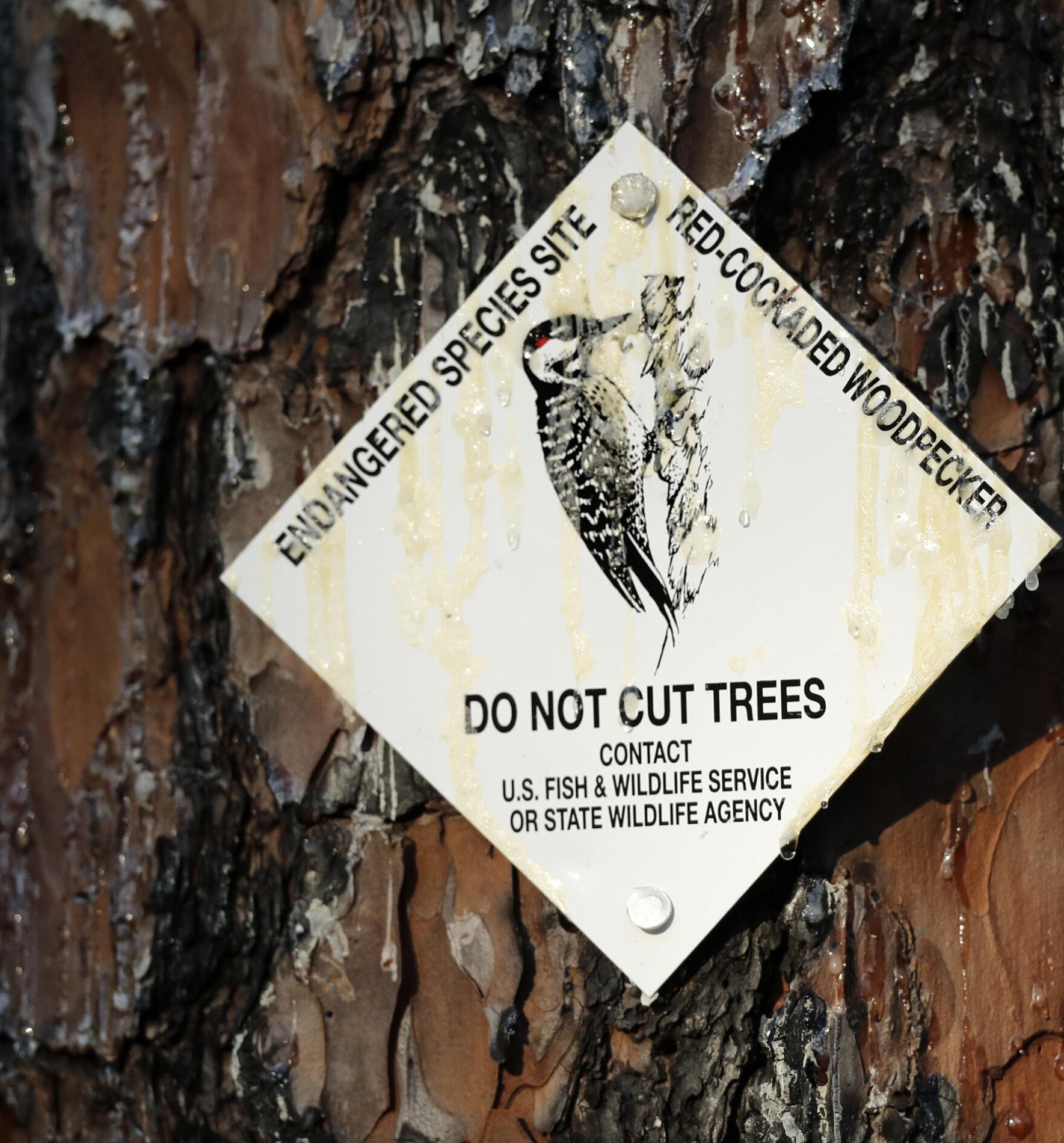


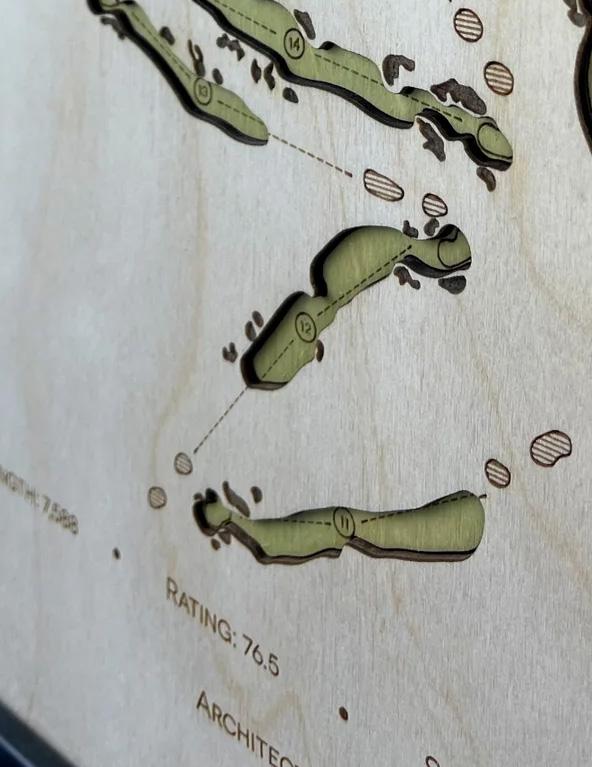

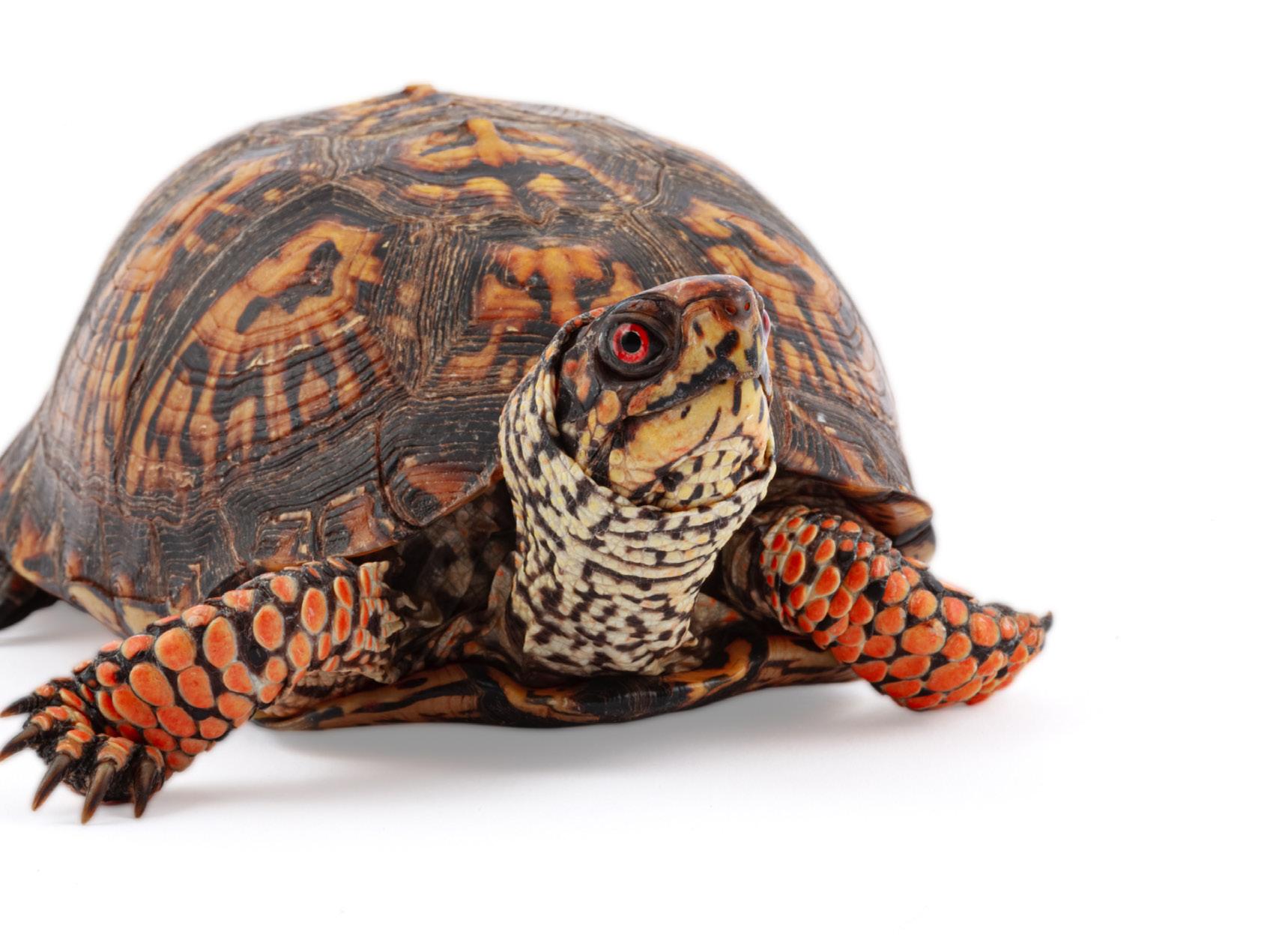
It’s easy to get tunnel vision while golfing: laser focus down the fairway to the tiny hole where you’d like your ball to go; keeping your golf cart on the narrow paths; calculating the next distance, the appropriate club, and the direction the wind is coming from.
But golf also offers a chance for some really beautiful moments outside that tunnel. Spending hours in nature, taking in all that the open landscape has to offer. Moore County is home to around 40 golf courses, translating to several thousand acres that vegetation and wildlife call home.
The Longleaf Pine Wiregrass Ecosystem surrounding Sandhill’s golf courses is a vital and unique habitat. Characterized by its tall, straight longleaf pine trees and an understory dominated by wiregrass, this ecosystem supports a diverse array of plant and animal species. The longleaf pine forests provide critical habitat for numerous species of wildlife. The wiregrass understory plays a crucial role in the ecosystem’s health, helping to suppress competing vegetation and promoting fire-dependent species diversity.
adapted to the unique habitat. Not only are their needles oversized, but the pinecones are also significant in size, measuring 6-10 inches.
Here’s a quick guide to some of the more notable plants and animals you may see.
The Longleaf Pine is one the dominant tree species in the Sandhills. Known for its longevity, Longleaf Pines have been known to live 300 years, and have built a strong resistance to fire (which plays an important role in maintaining the health and biodiversity of longleaf ecosystems. The tree was instrumental in the formation of the area, providing resources for the turpentine, pitch and tar industry. Its ‘pine ozone’ was also thought to have healing properties for tuberculosis, leading the area to be first
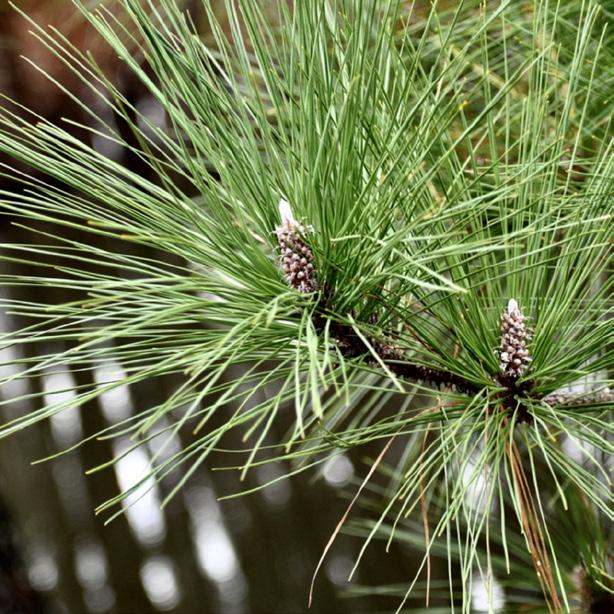
marketed as a ‘health resort’ before turning the focus to recreation. Its long pine needles, ranging from 8 to 18 inches help provide a home for insects, birds and wildlife who have
Their signature structure of tall, straight trunks contribute to the iconic Sandhills landscape.
You may be surprised at the wide variety of squirrels that duck and dive in front of your car or golf cart here in the Sandhills. There are all colors, ranging from black to gray to beautiful red and all sizes, from the tiniest gray squirrels to the monster fox squirrels. The notable fox squirrel thrives in the ecosystem created by Longleaf Pines. They range from 20-26 inches in length and forage around on acorns, pine seeds, and berries. Their coats range

from gray, red, black or a combination of the colors. In North Carolina, most squirrels in this species are gray, sometimes with black patches. Up to 25 percent of southeastern fox squirrels have black coats so if you see one of these cloaked fellows during your round, consider yourself lucky!
The smaller eastern gray squirrel has adapted away from their home preference in mature woodlands, to now calling the more urban areas home. They feed on a wider variety of foods, including mainly nuts, buds and flowers, but they also eat insects, eggs, fungi, carrion, and small mammals, reptiles and amphibians.
If you happen to pass an eastern box turtle while on the course, it might behoove you to ask him for some pointers. Their long lifespan (several decades in the wild), and strong defender of their small home territory means they have probably seen more golf swings than most humans. Typically they don’t travel beyond their range of just a few acres during their whole lifetime.
These turtles have a distinctive dome shaped shell that is hinged on the bottom, creating the ability to completely seal themselves inside as protection against predators, so don’t be offended if they seem a little socially awkward.
They lay their eggs in the sandy soil of the Sandhills, with their hatchlings emerging in late summer/early fall.
Bachman’s Sparrows are primarily found in longleaf pine forests, typically nesting on or near the ground in dense vegetation, constructing nests from grasses, pine needles, and other plant
materials. Golfers with a keen eye may catch glimpses of these secretive sparrows flitting among the wiregrass and shrubs, their muted brown plumage blending seamlessly with the surrounding vegetation.
They have a distinctive sparrow whistling song followed by a trill.
These birds are closely associated with longleaf pine ecosystems, which historically depended on regular fires for regeneration. Prescribed burning is now used as a management tool to maintain suitable habitat for these birds.
The Sandhills Lily adds a touch of natural beauty and rarity to Pinehurst, NC’s golf courses. Found nestled among the sandy soils and open pine forests characteristic of the Sandhills region, the Sandhills Lily stands out with its elegant white petals adorned with striking red spots. Its slender stems, typically reaching heights of up to two feet, support multiple blooms, each radiating with intricate patterns.They thrive in areas with well-drained, sandy
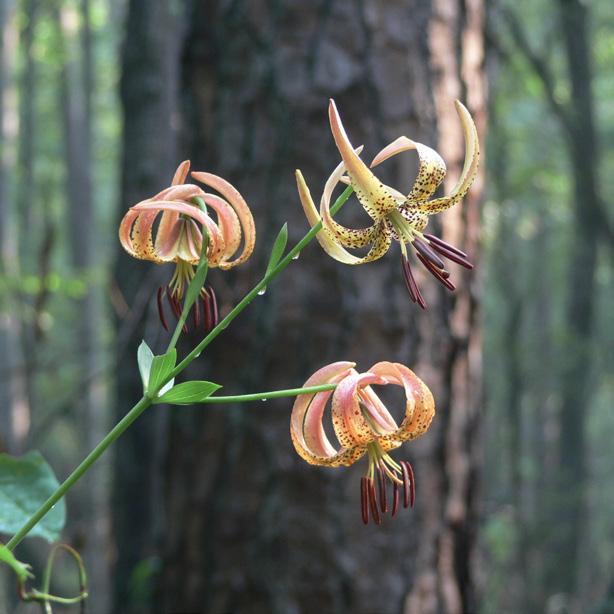

soils, often near the edges of fairways or amidst the native vegetation lining the course. Look for clusters of slender, lance-shaped leaves and slender stems topped with showy flowers, which typically bloom in late spring or early summer
Just like most places in the Eastern United States, the white-tailed deer is one of the most abundant mammals in the Sandhills area. Their namesake white undertail can commonly be seen bouncing across the fairways, taking cover in the pines or stopping to graze.
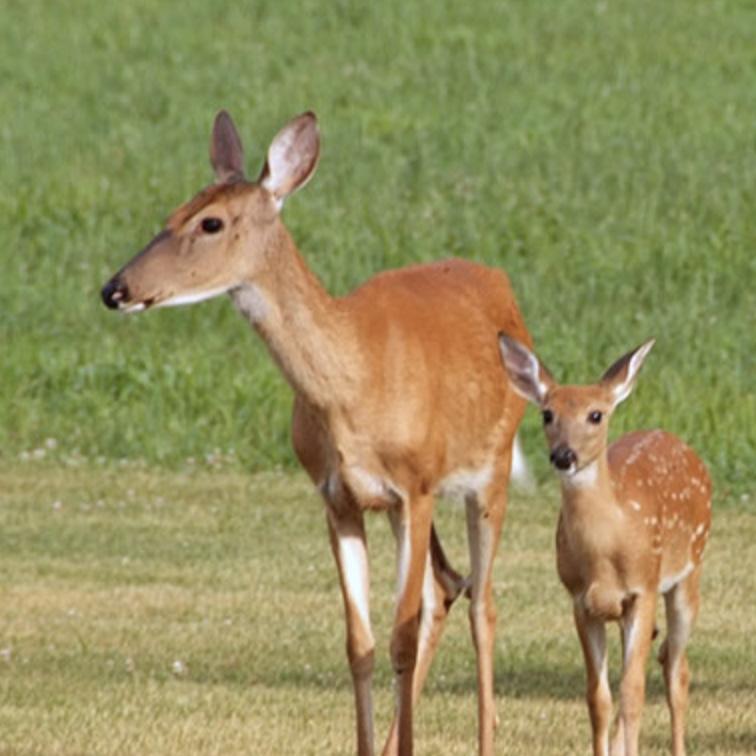
They are typically quiet creatures, only letting out a distinct “warning snort” when they sense danger.
Their ability to thrive in many conditions means they are just as home among the greens as they are in people’s backyards. Most active during early mornings or late afternoon, they add a picturesque quality to iconic Pinehurst scenes.
During the spring, extremely young fawns (who listen to their mom’s impeccability) are told to stay in a place until their mom returns. You may see them curled up, semi hidden from view, waiting for mom to return. Typically these lone youngsters need no human intervention - their mom just doesn’t want to be slowed down while she runs her daily errands.
This small woodpecker is characterized by its black and white plumage, with a distinctive black cap and nape, a white cheek patch, and barred black and white wings. However, what truly sets the Red-cockaded Woodpecker apart is its unique social structure and habitat requirements. Unlike many other woodpecker species, the Redcockaded Woodpecker is cooperative breeders, meaning that multiple individuals, typically family members, work together to excavate and maintain cavities in mature longleaf pine trees.
When searching for this endangered species, look for characteristic signs such as clusters of resin wells around cavity entrances, which the woodpeckers create to deter predators such as snakes. Additionally, listen for their distinctive calls, including a distinctive “pik” note, often accompanied by soft trills or chirps, which they use for communication within family groups and to defend their territories. By familiarizing themselves with these visual and auditory cues, golfers and naturalists can contribute to the conservation of this iconic species while enjoying the natural beauty of Pinehurst’s golf courses.
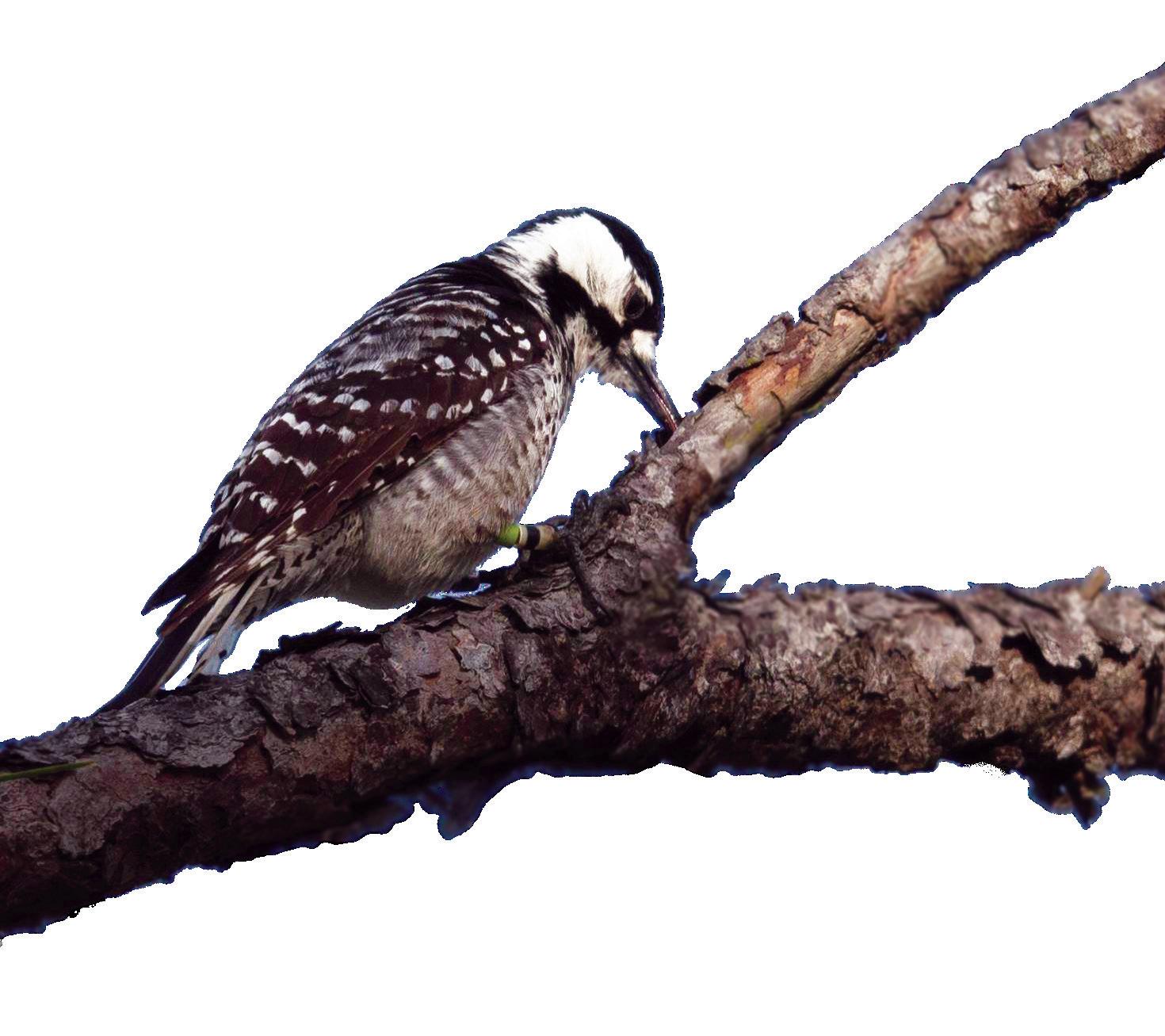
The Red-cockaded woodpecker has been protected under the Endangered Species Act since the 1970s.

Jun 11, 2024 - Jun 13, 2024
U.S. Open Golf Championship
Pinehurst Resort and Country Club - No. 2
Pinehurst, NC

Jun 14, 2024 - Jun 15, 2024
Carolinas Junior Girls’ Championship
Quail Ridge Golf Course Sanford, NC
Jun 18, 2024 - Jun 20, 2024
Carolinas Junior Girls’ Championship
Quail Ridge Golf Course Sanford, NC
Jun 25, 2024 - Jun 26, 2024
North & South Women’s Amateur Championship
Pinehurst Resort and Country Club - No. 2 Pinehurst, NC
Jun 25, 2024 - Jun 29, 2024
North & South Men’s Amateur Championship
Pinehurst Resort and Country Club - No. 2
Pinehurst, NC
Jun 25, 2024 - Jun 27, 2024
North & South Junior Championship
Pinehurst Resort and Country Club - No. 2 Pinehurst, NC
Jul 01, 2024 - Jul 03, 2024
North & South Junior Championship
Pinehurst Resort and Country Club - No. 2
Pinehurst, NC
Jul 06, 2024 - Jul 07, 2024
Carolinas Father-Son & Parent-Child Championship
Pinehurst area courses
Pinehurst, NC
Jul 19, 2024 - Jul 19, 2024
Country Club of North Carolina
National Father-Son Invitational Country Club of North Carolina Pinehurst, NC
July 22-23, 2024
27th North Carolina
Junior Boys’ 14 and Under Asheboro City GC Asheboro, NC
Aug 01, 2024 - Aug 03, 2024
U.S. Kids
World Championship
Pinehurst area courses
Pinehurst, NC

Aug 05, 2024 - Aug 05, 2024
The Dark Star Amateur Treyburn Country Club
Durham, NC
Aug 06, 2024 - Aug 07, 2024
North Carolina Senior Four-Ball Championship
Greenville Country Club
Greenville, NC
Aug 06, 2024 - Aug 07, 2024
The Dark Star Amateur Treyburn Country Club
Durham, NC
Aug 07, 2024 - Aug 09, 2024
Tot Hill Farm Golf Club
Golfweek Senior National Match Play
Tot Hill Farm Golf Club
Asheboro, NC
Aug 08, 2024 - Aug 10, 2024
Moore County Amateur Championship
Southern Pines Golf Club
Southern Pines, NC
Aug 10, 2024 - Aug 11, 2024
North & South Senior Men’s Amateur Championship
Pinehurst Resort and Country Club - No. 4
Pinehurst, NC
Aug 12, 2024 - Aug 14, 2024
North & South Senior Women’s Amateur Championship
Pinehurst Resort and Country Club - No. 4
Pinehurst, NC
Aug 31, 2024-Sep 01, 2024
U.S. Kids Golf Teen Series Event
Longleaf Golf and Family Club
Southern Pines, NC
Sep 16, 2024 - Sep 17, 2024
Veteran Golfers Association Championship
Grandover Resort - East Course
Greensboro, NC


BHAWK / Brad Halling American Whiskey Ko.
Celebrity Greens
Crispian Consulting
Cote Timeworks
Golf Augusta
Golf Pride
Hatchet Brewing Company
Jason Jackson Photography
Jennifer Ritchie / Everything Pines
Makana Photography
Putter
Sweet
Woodllake Country



















